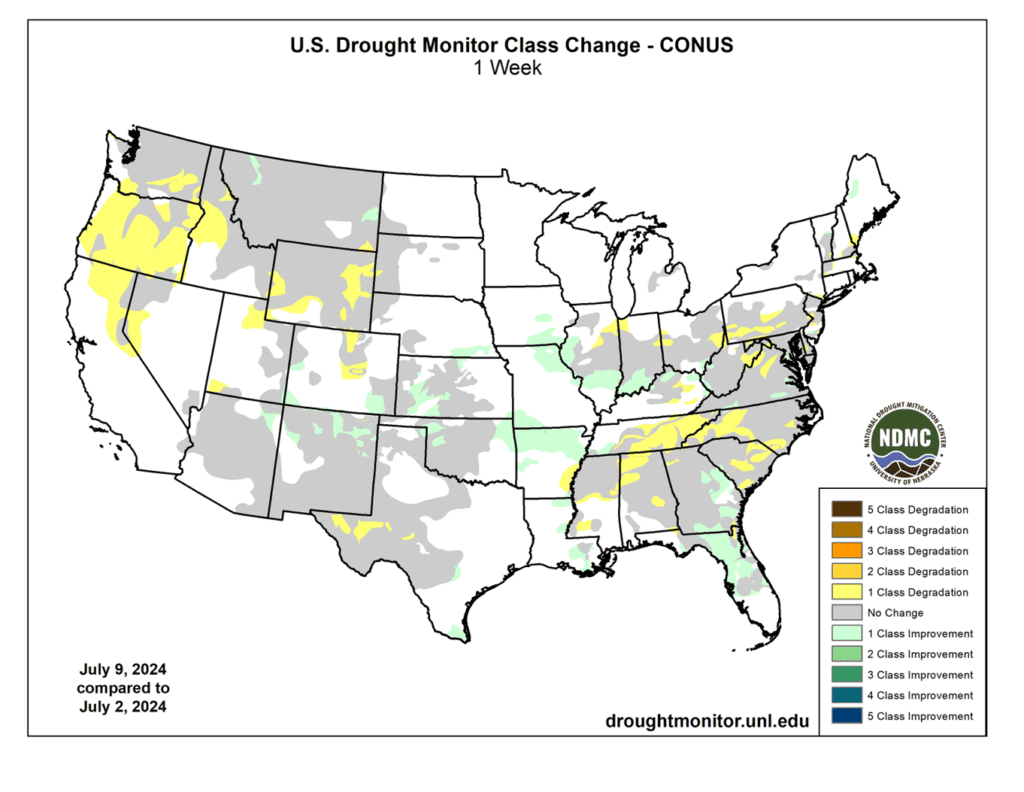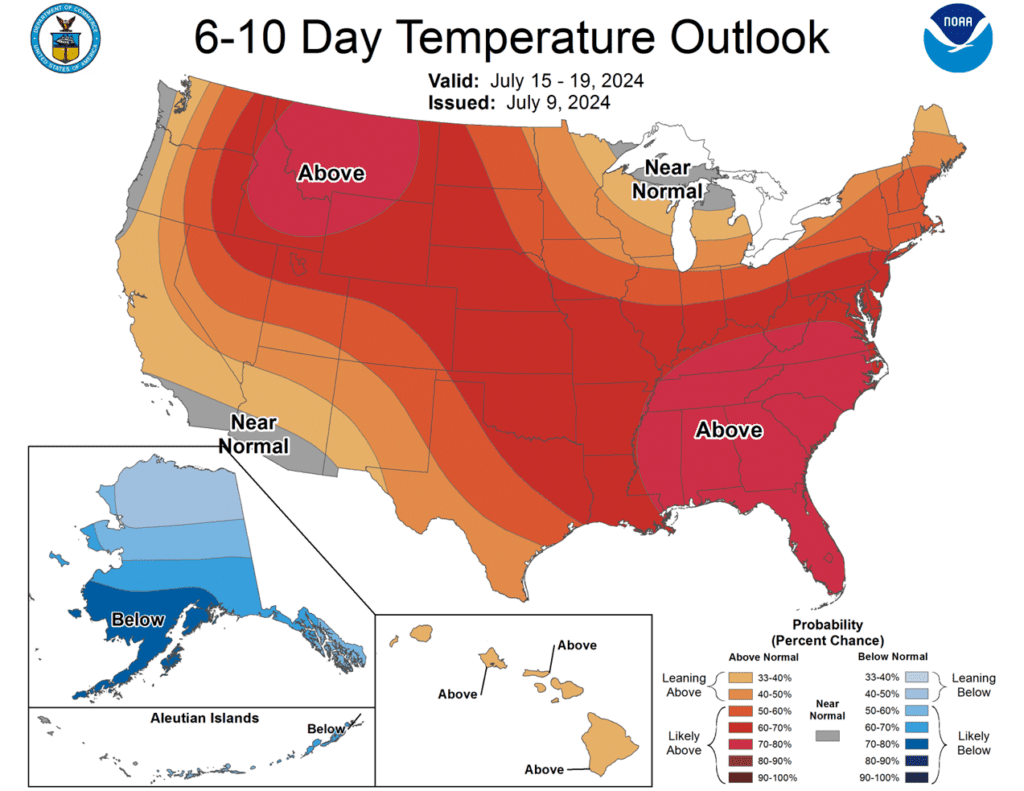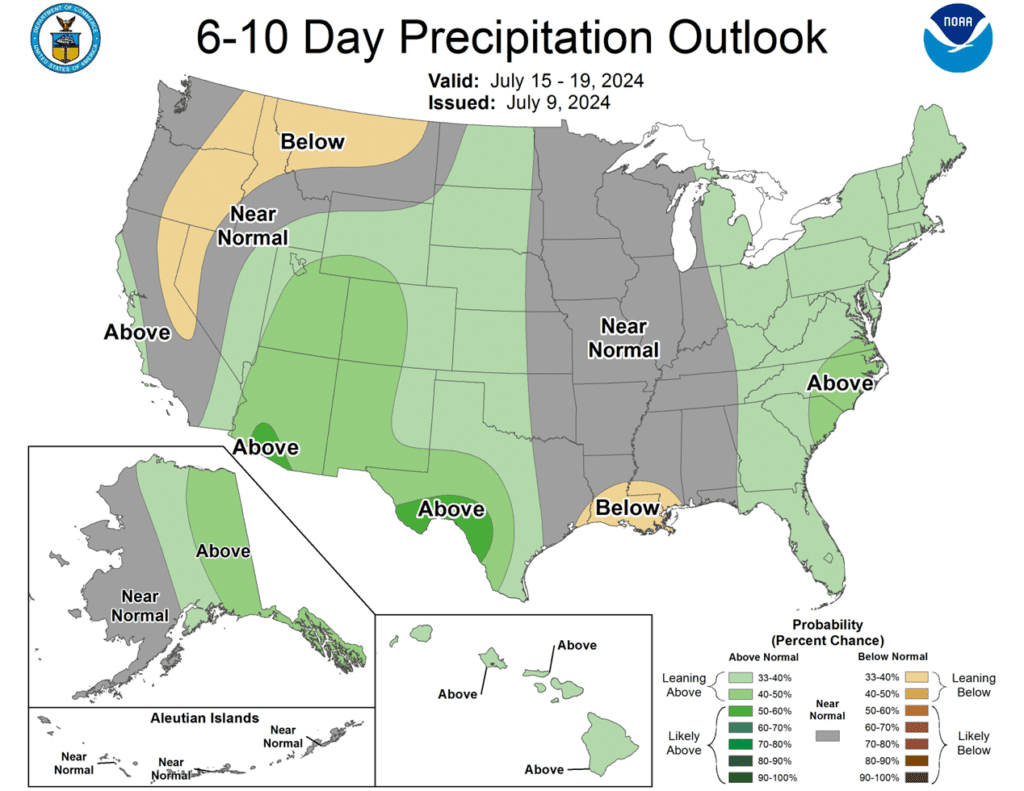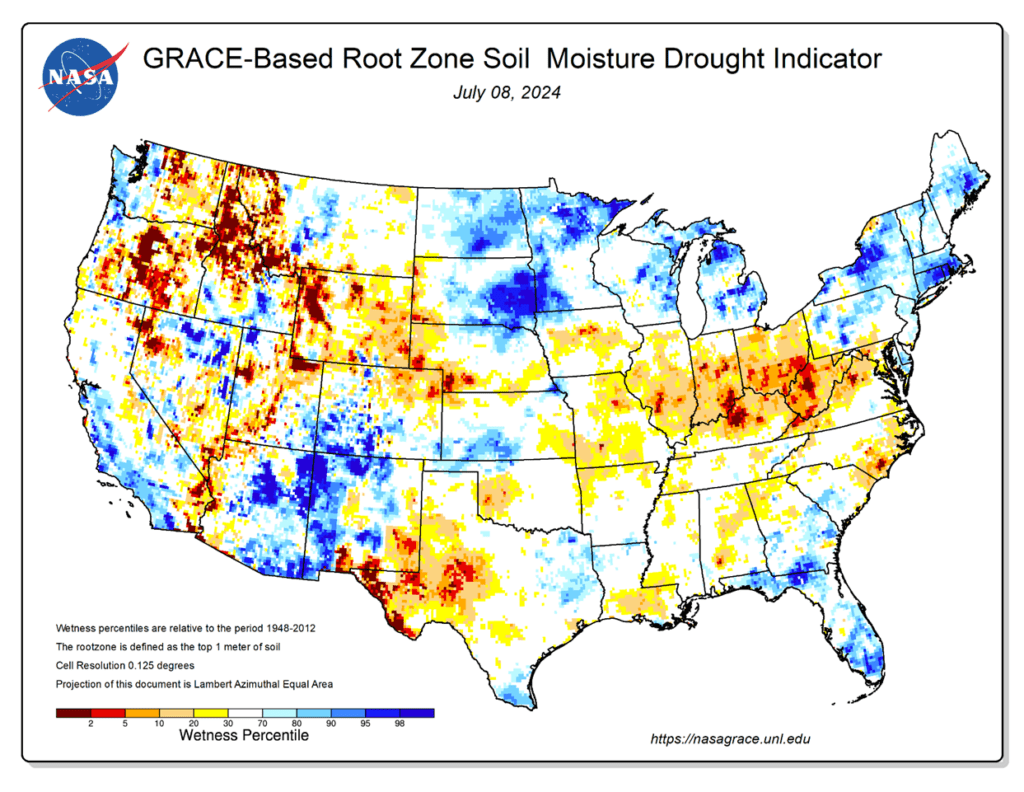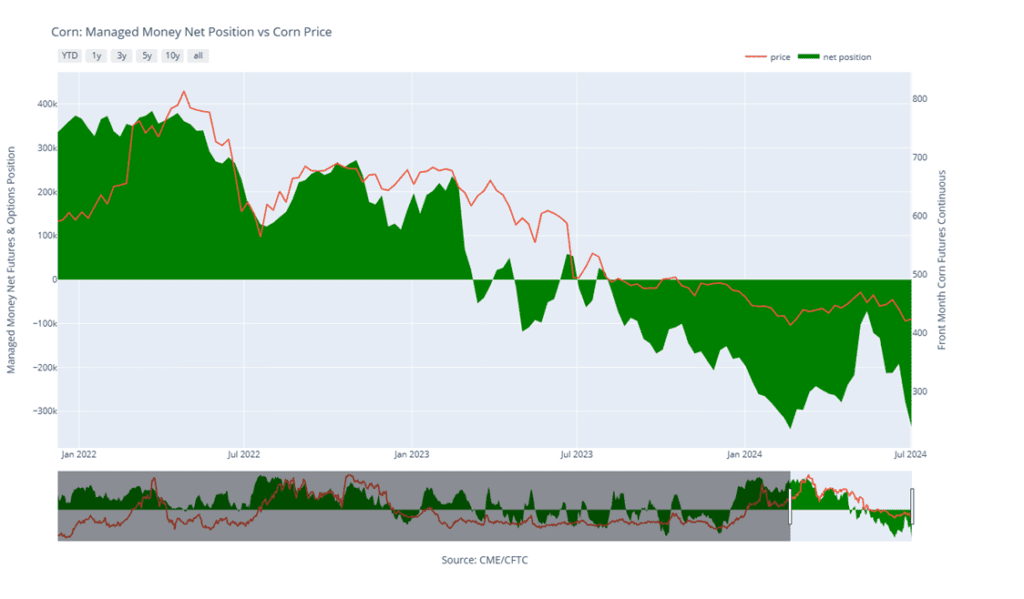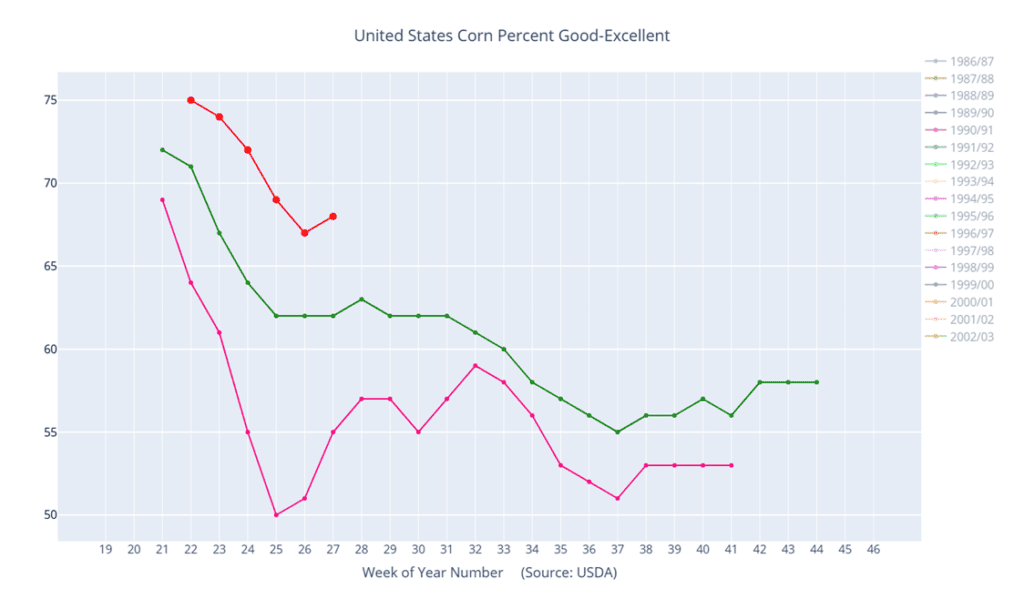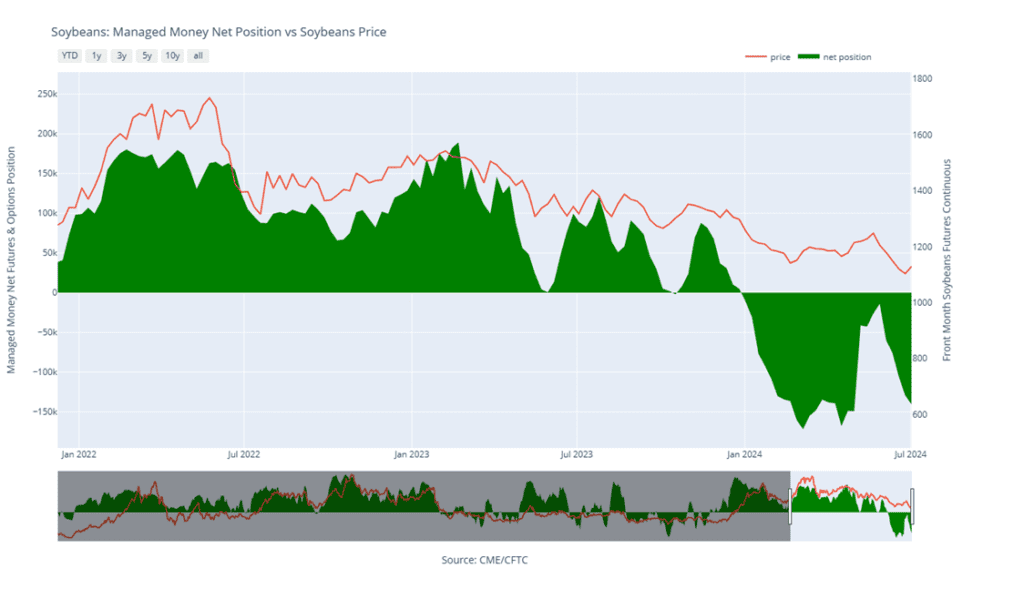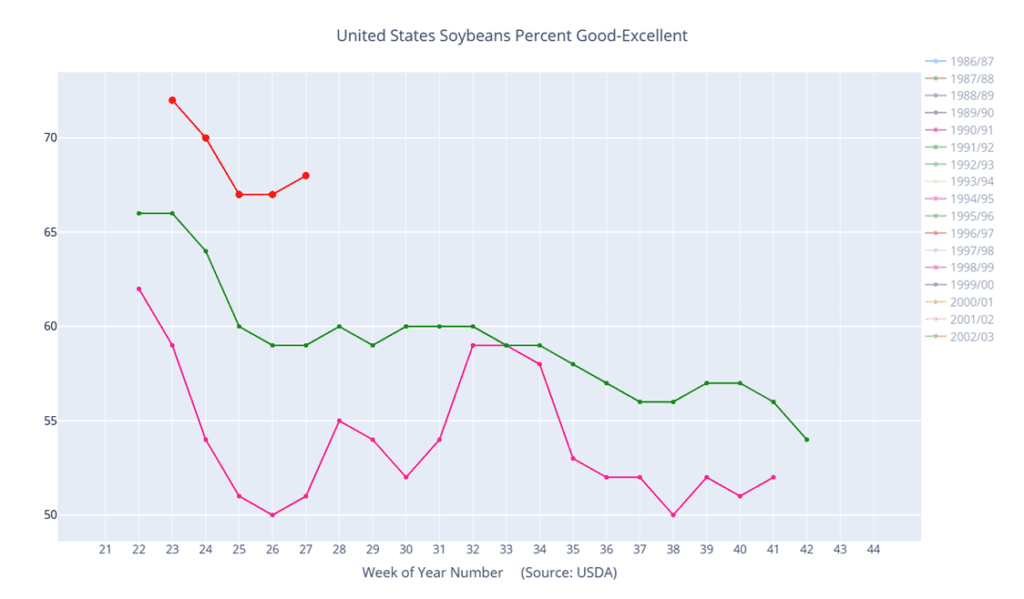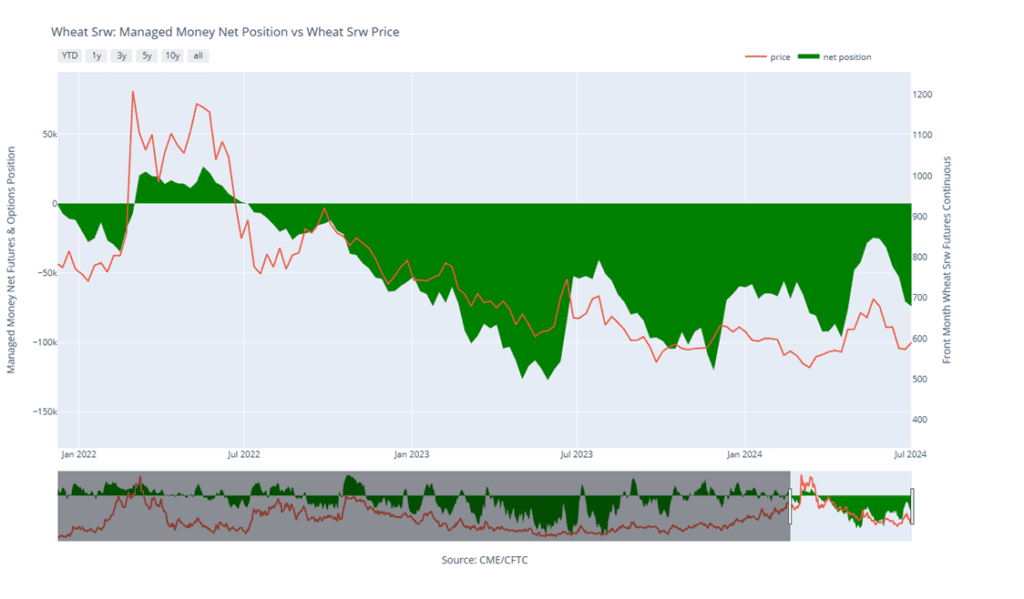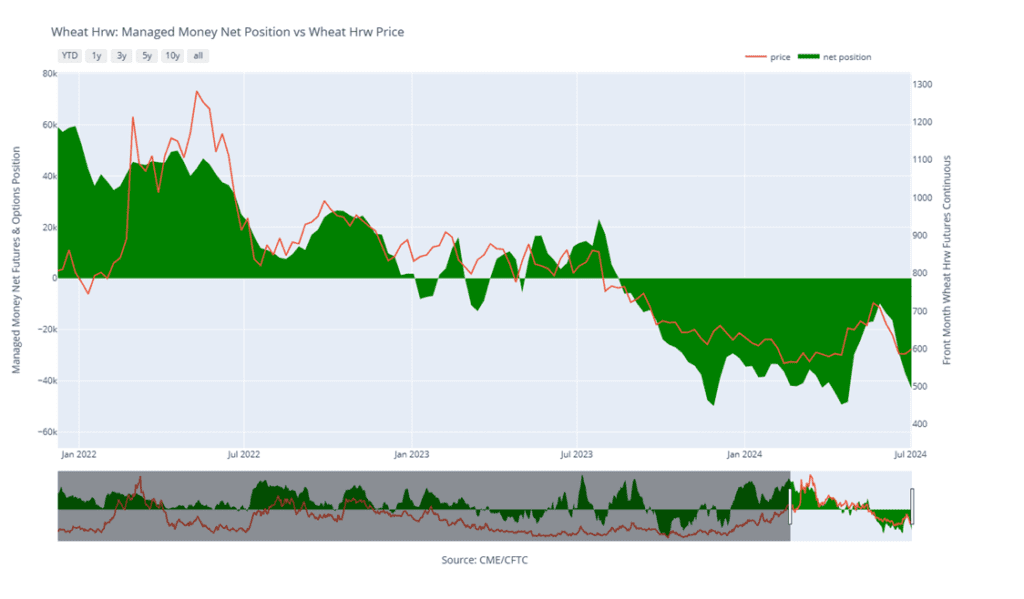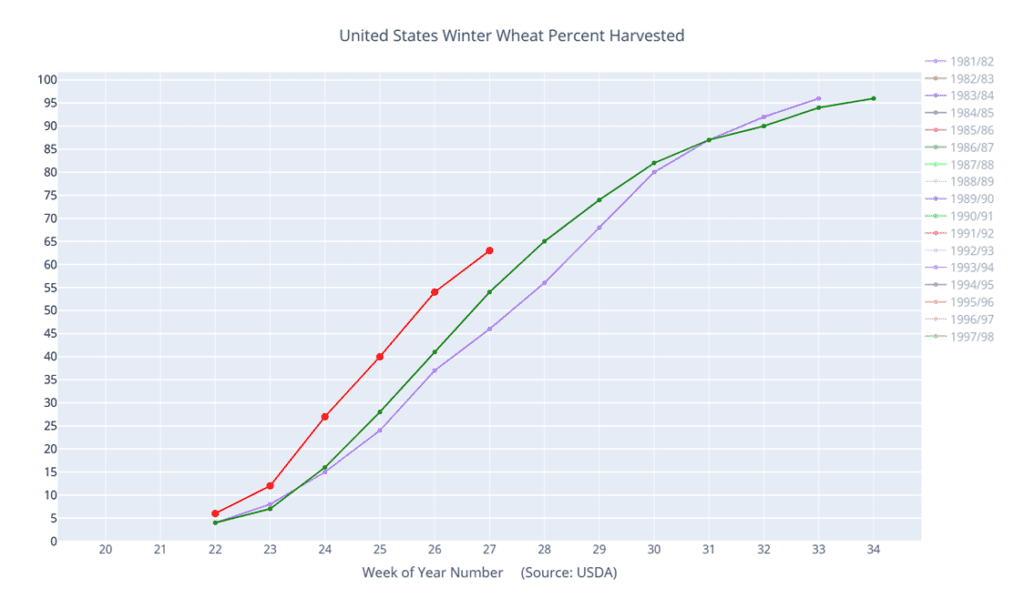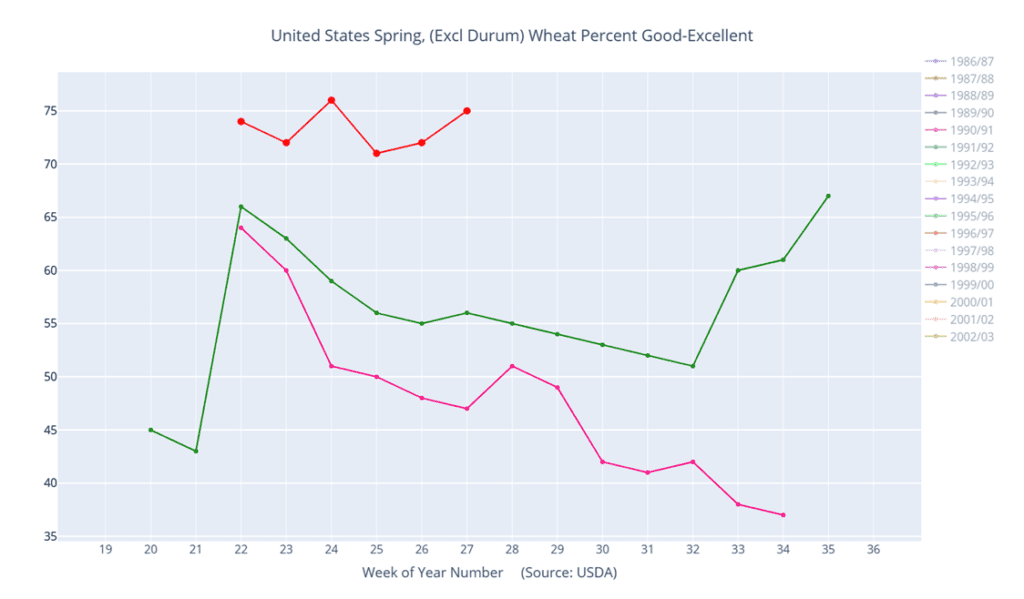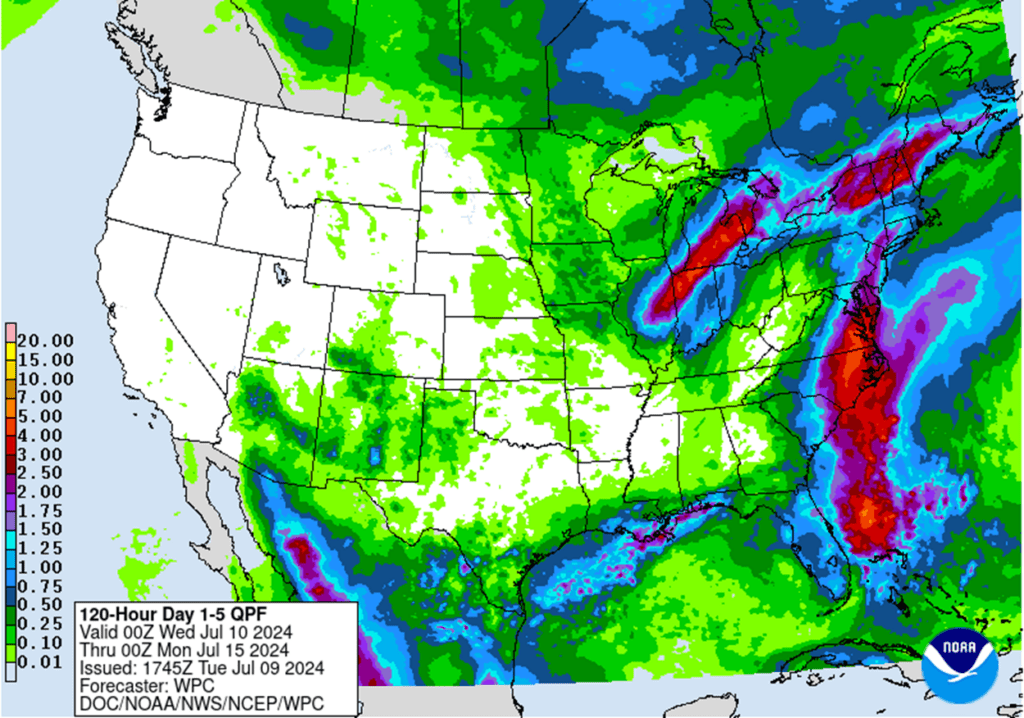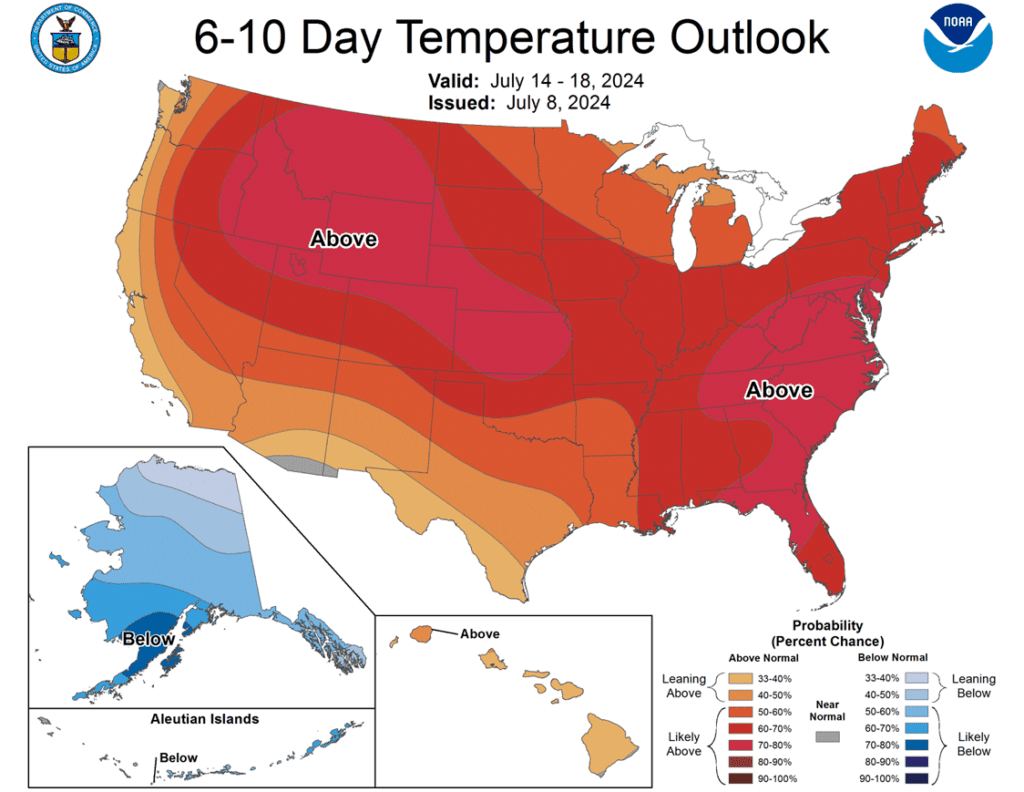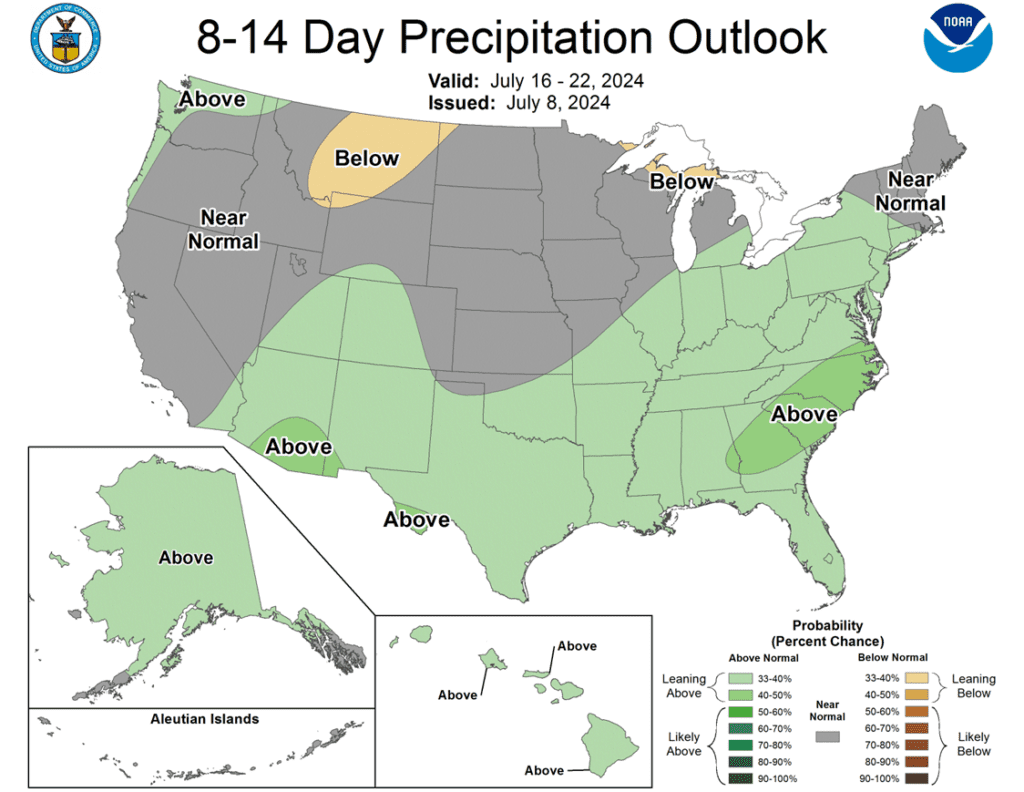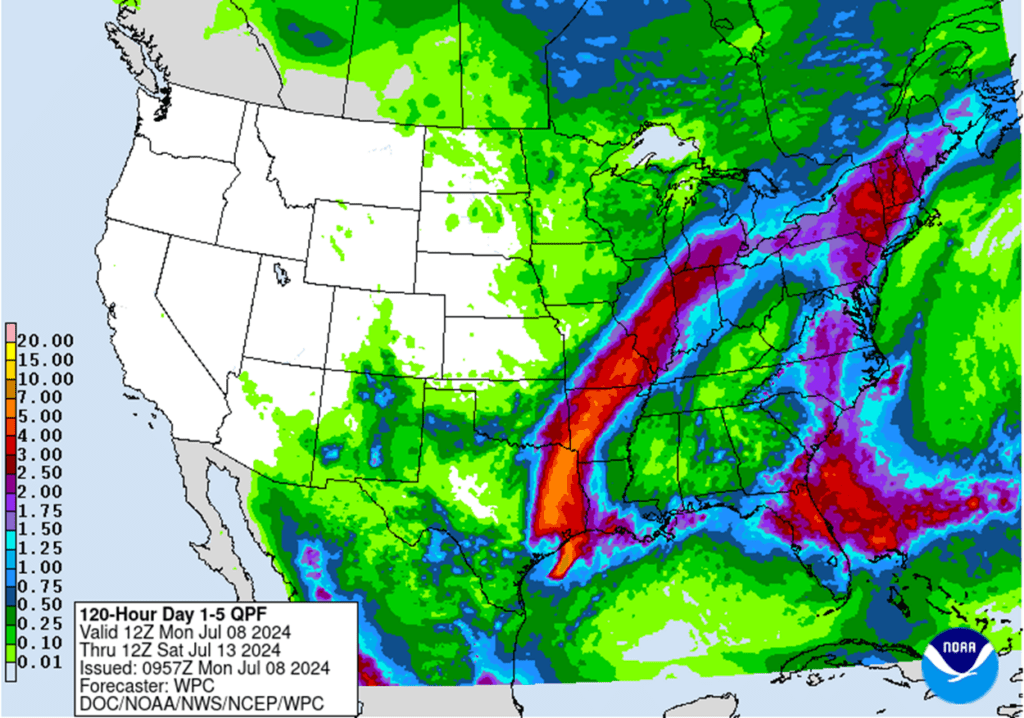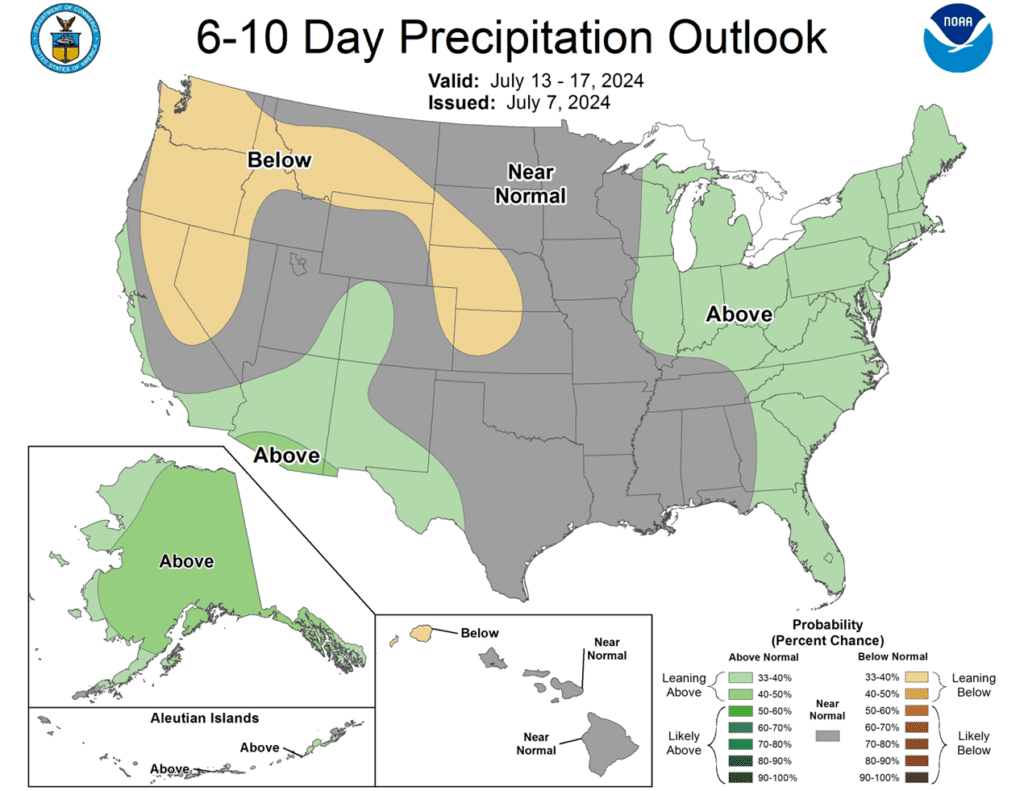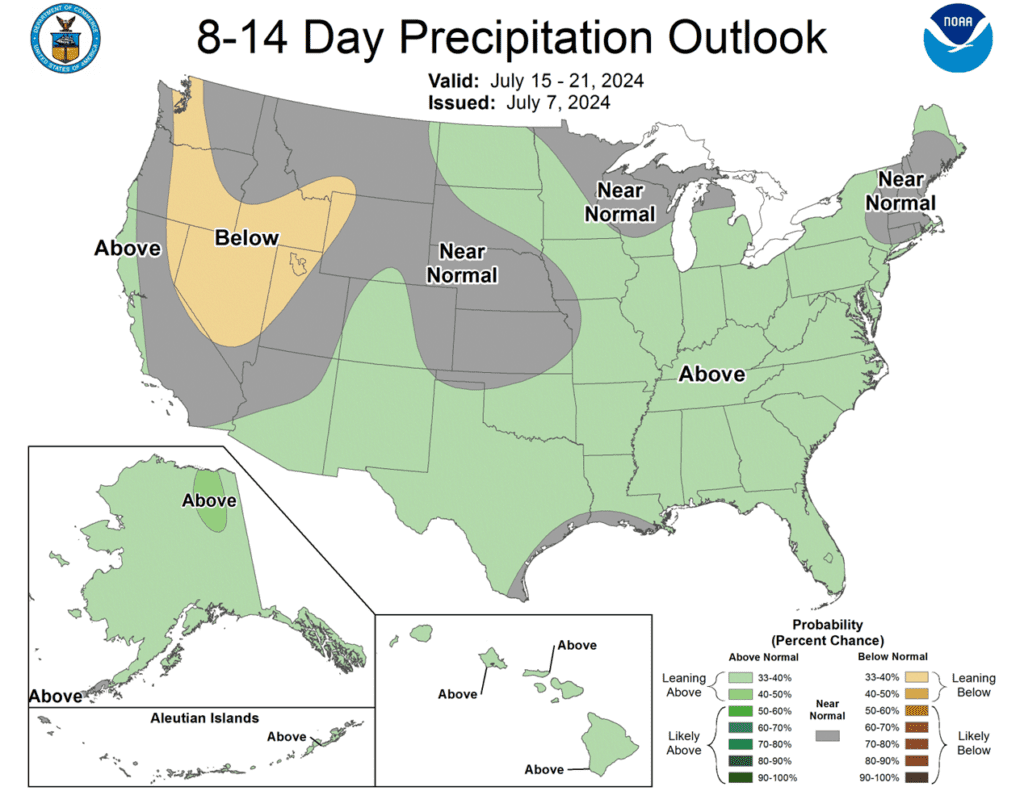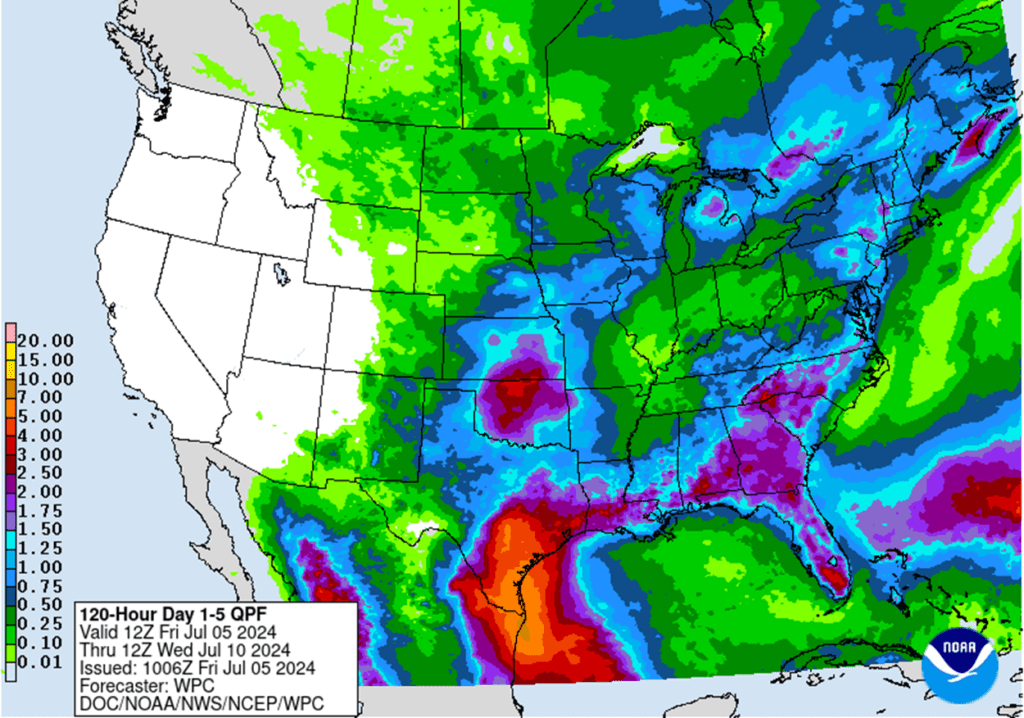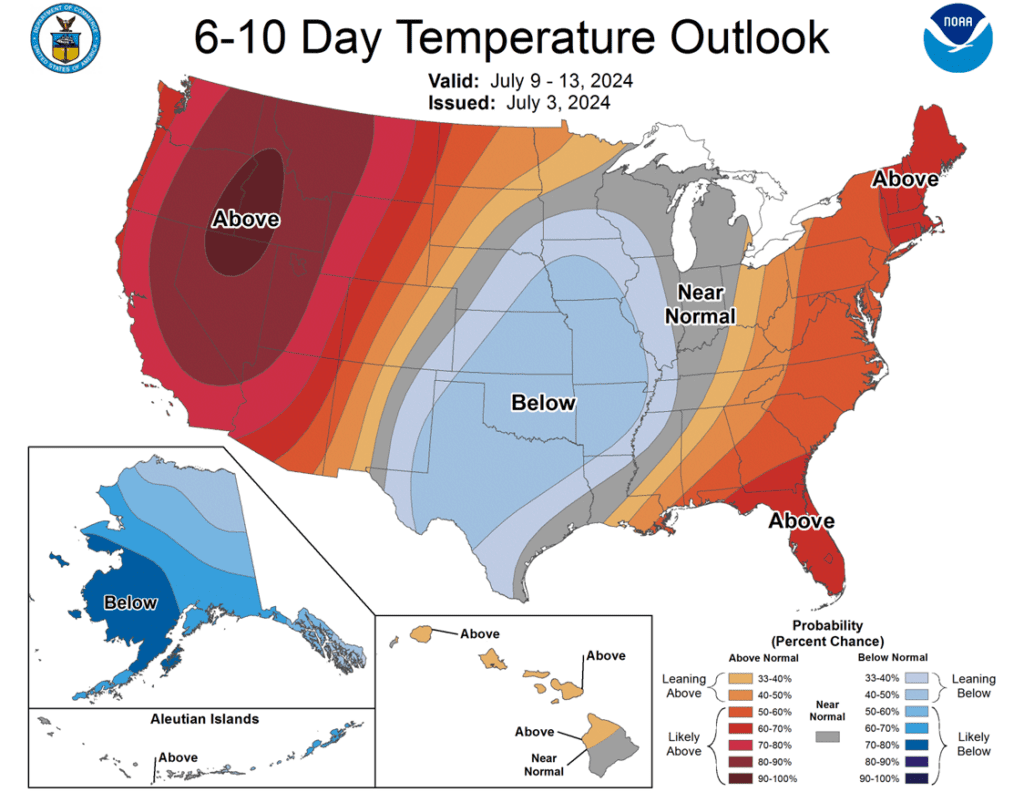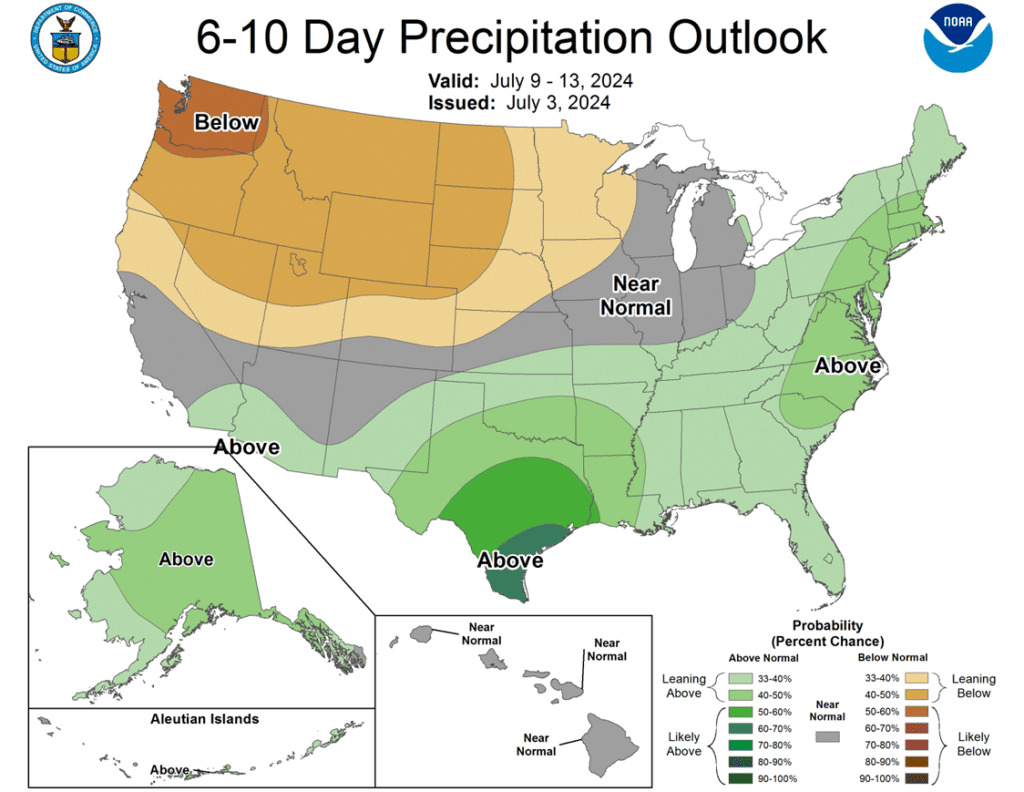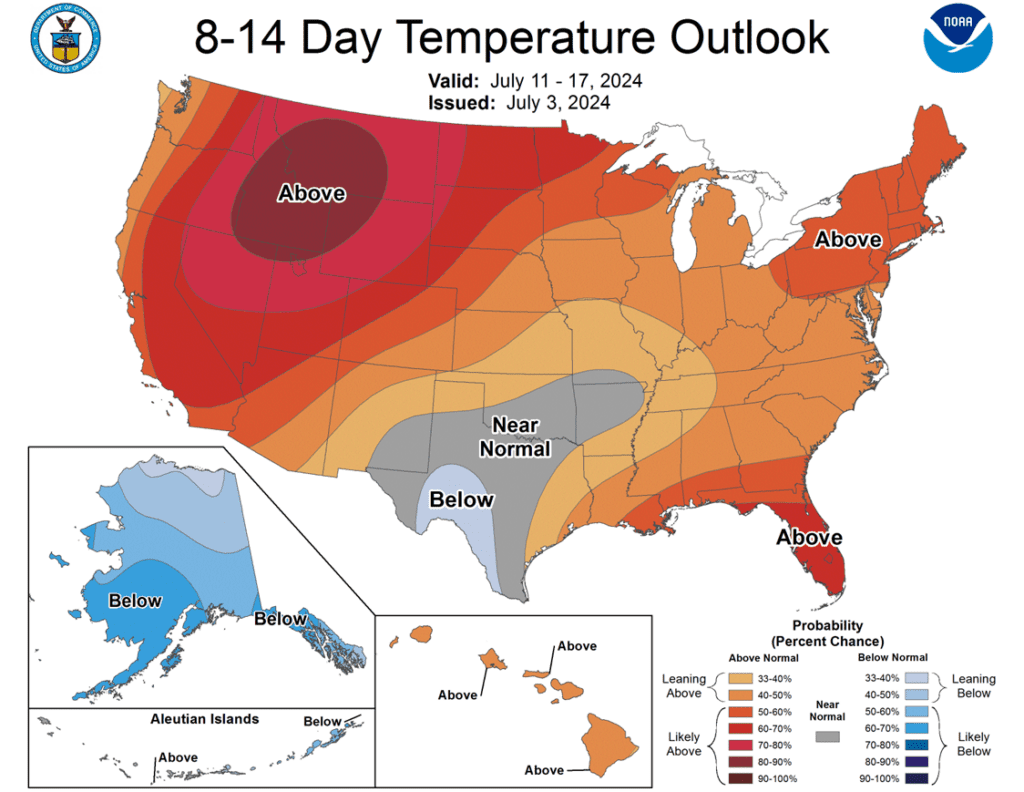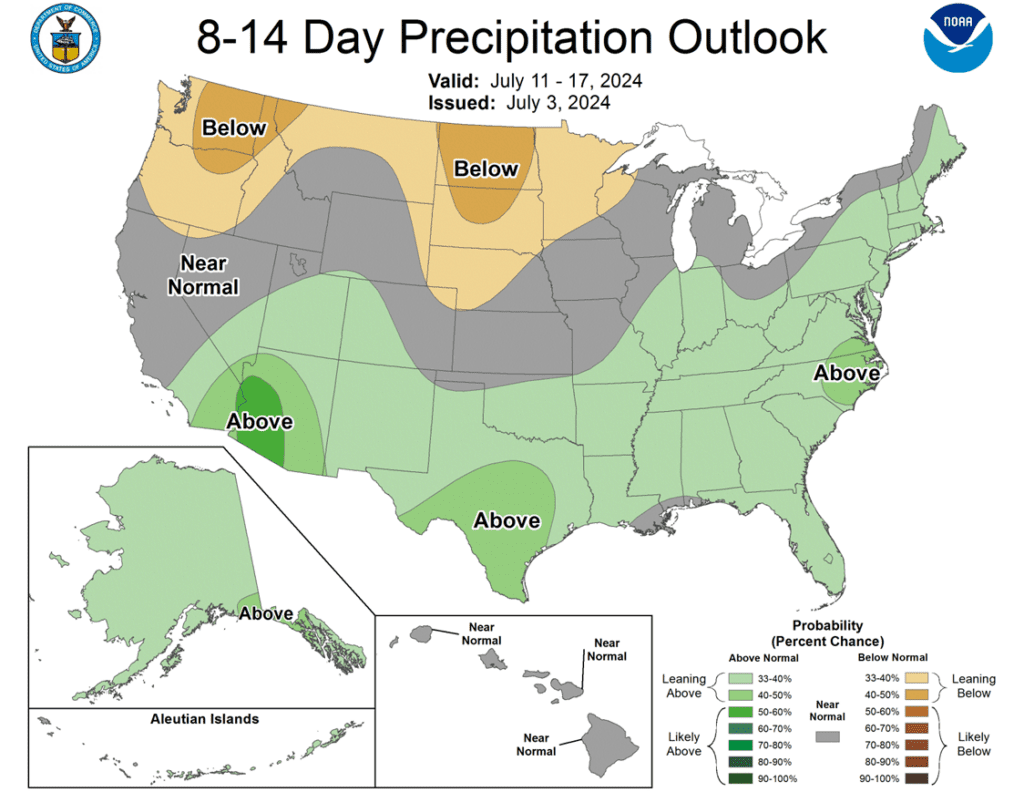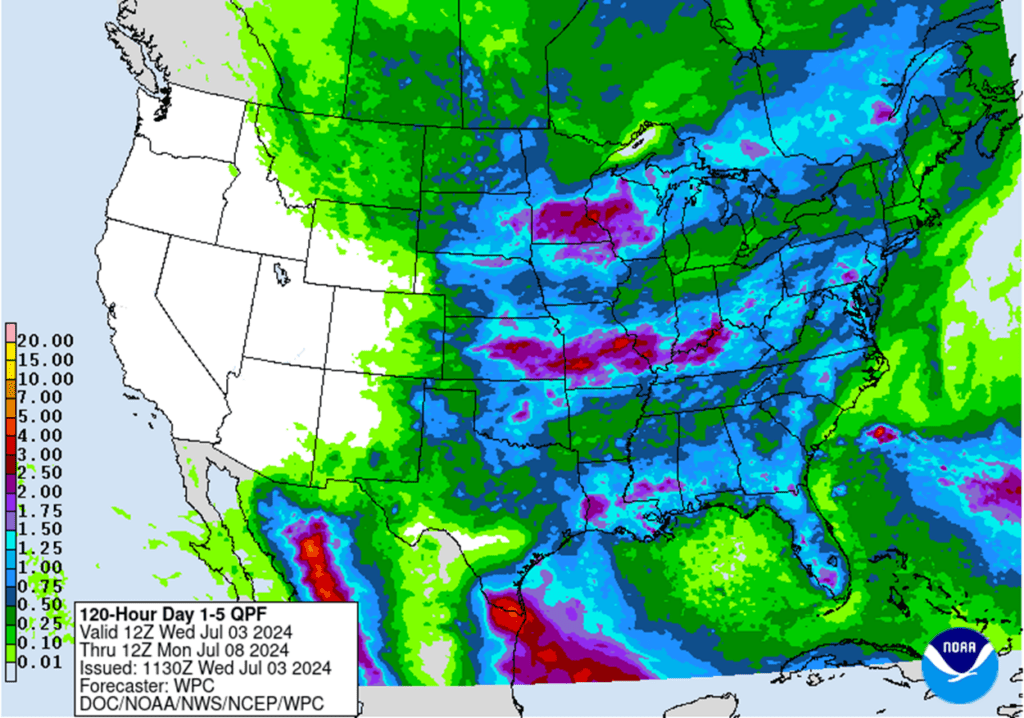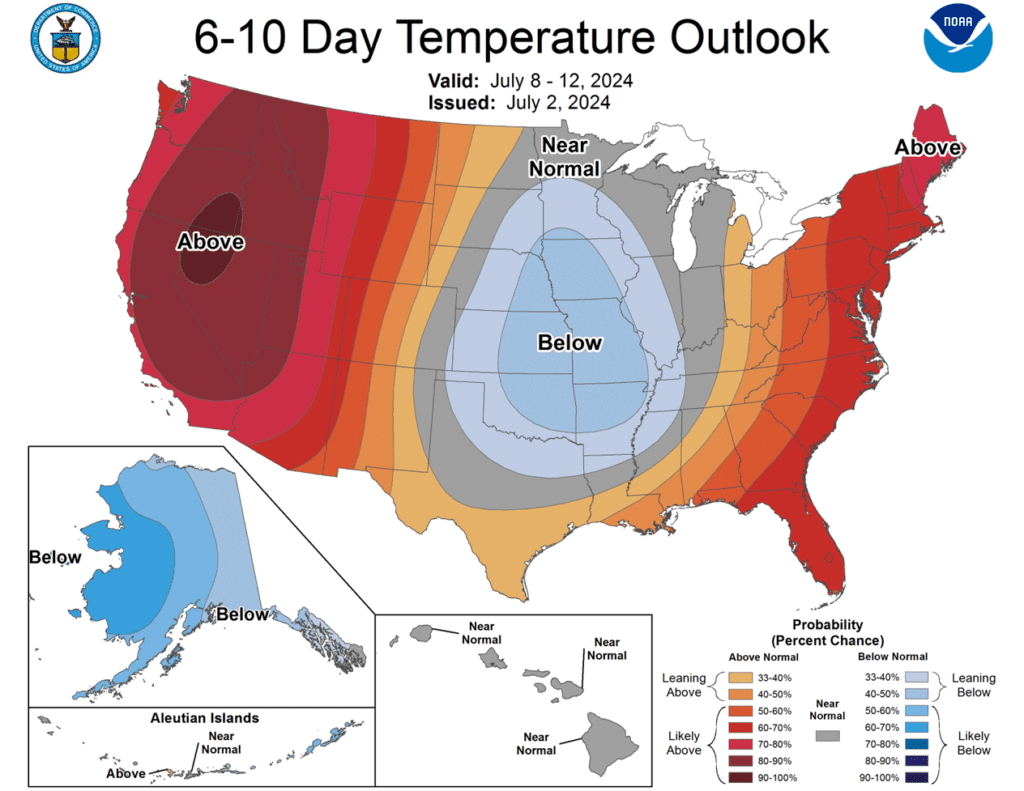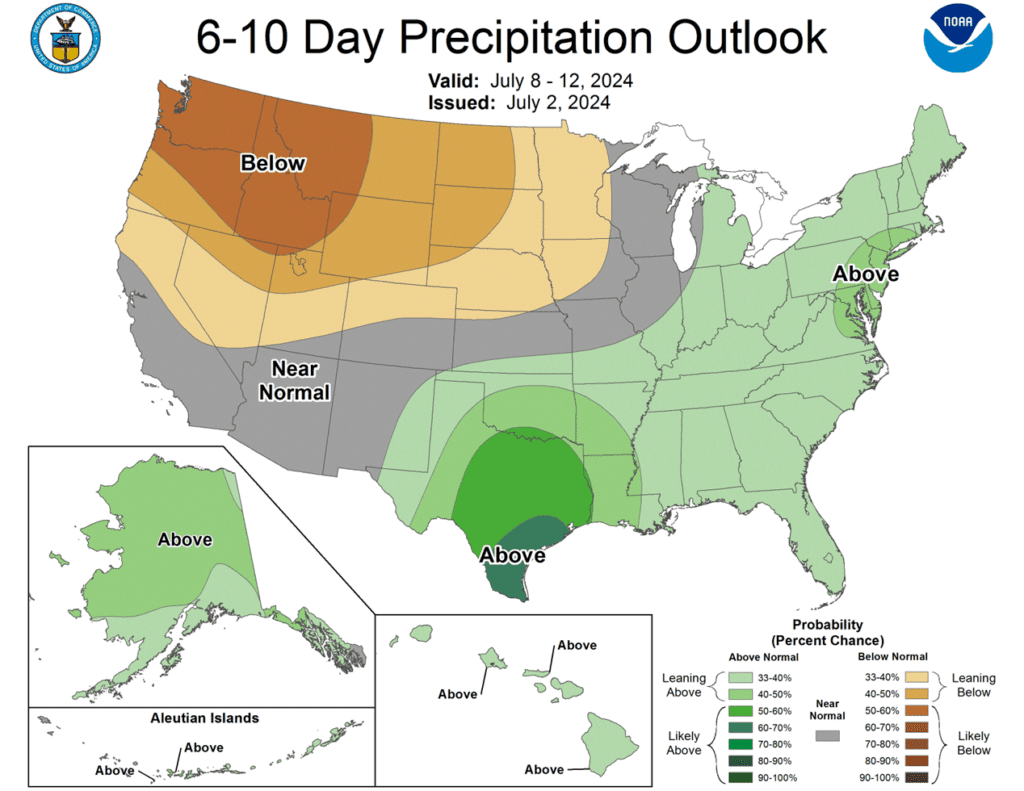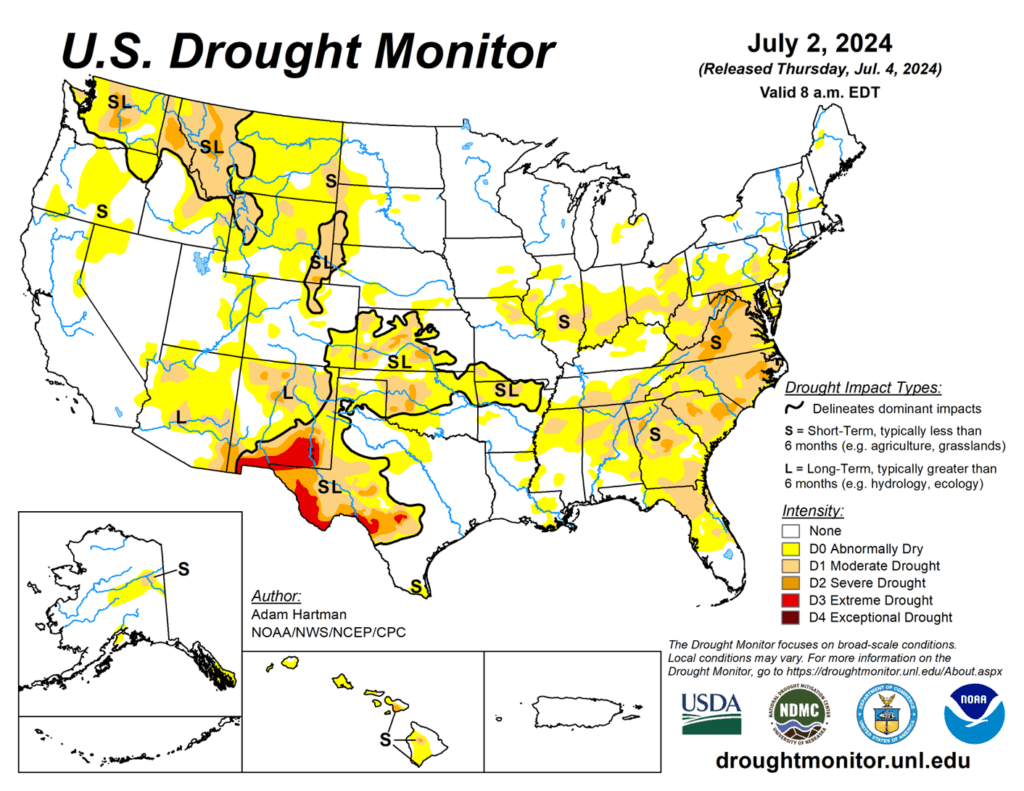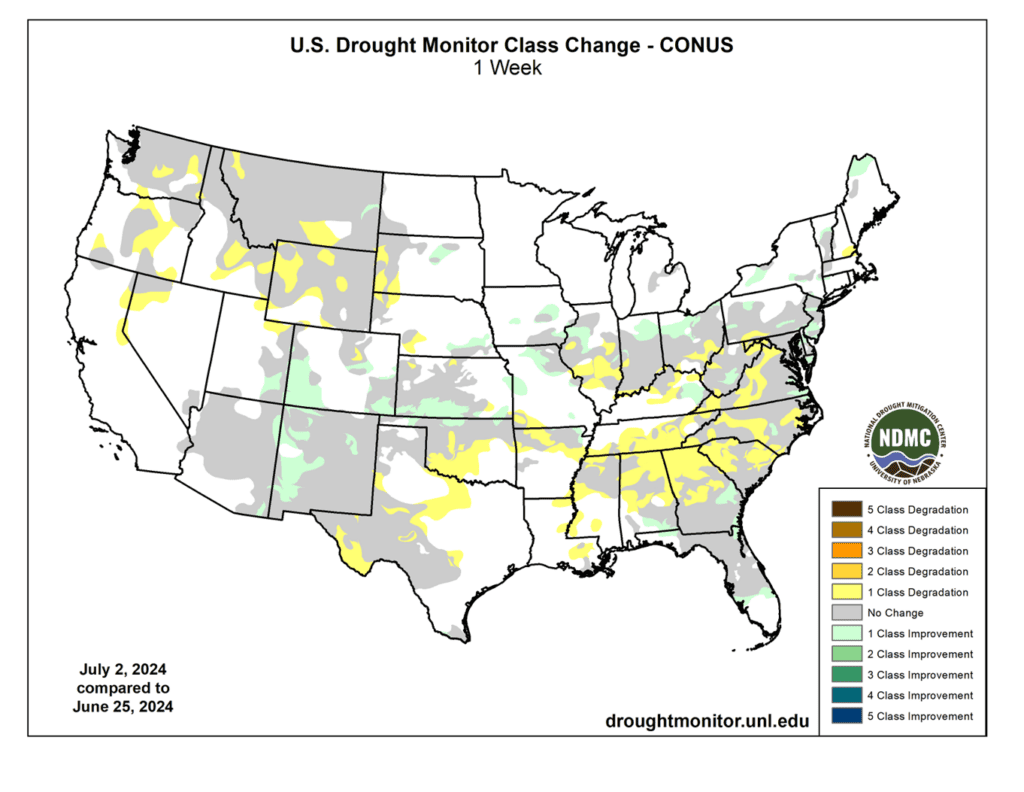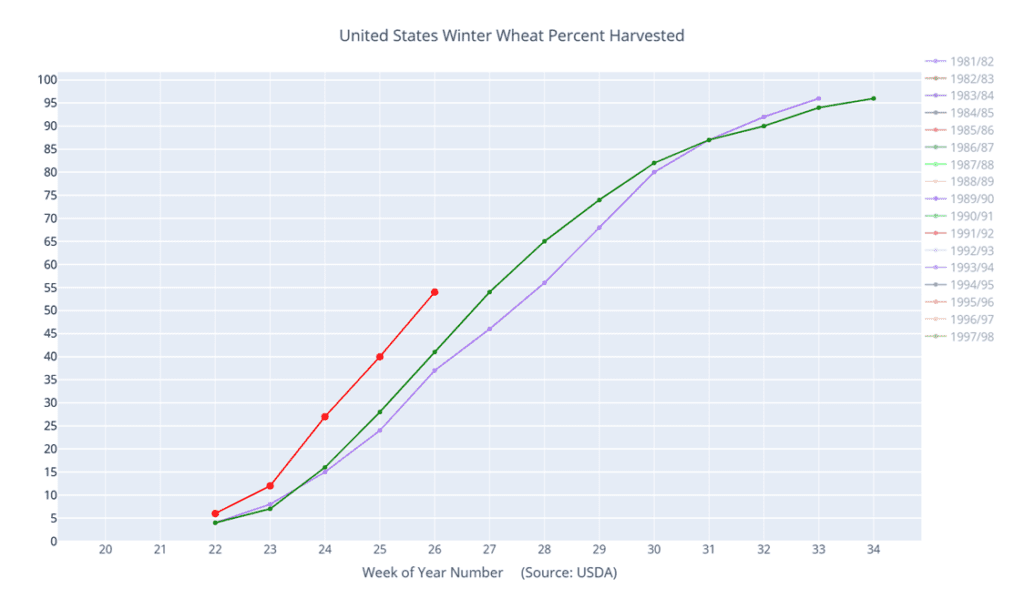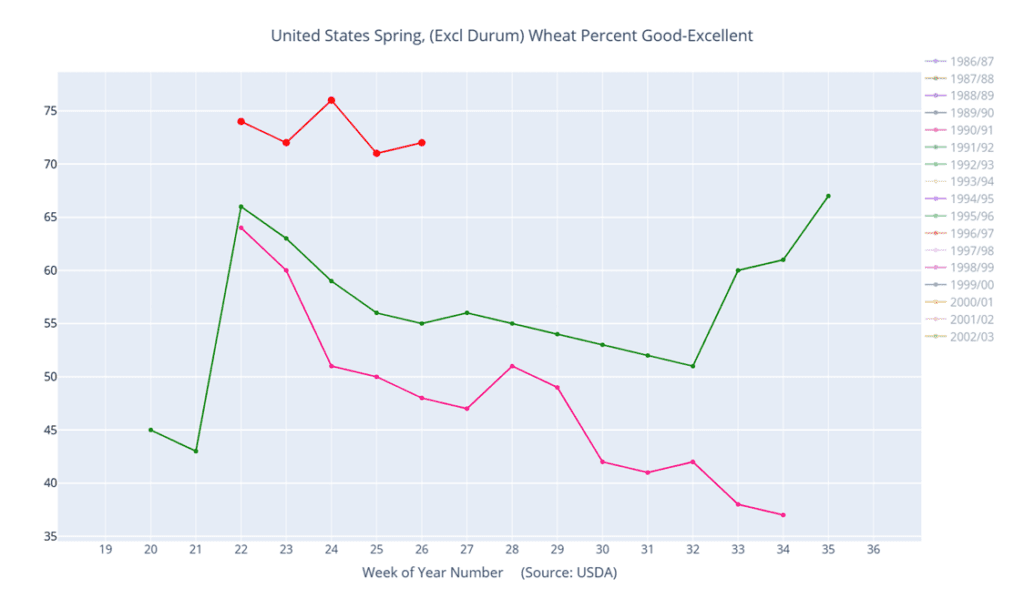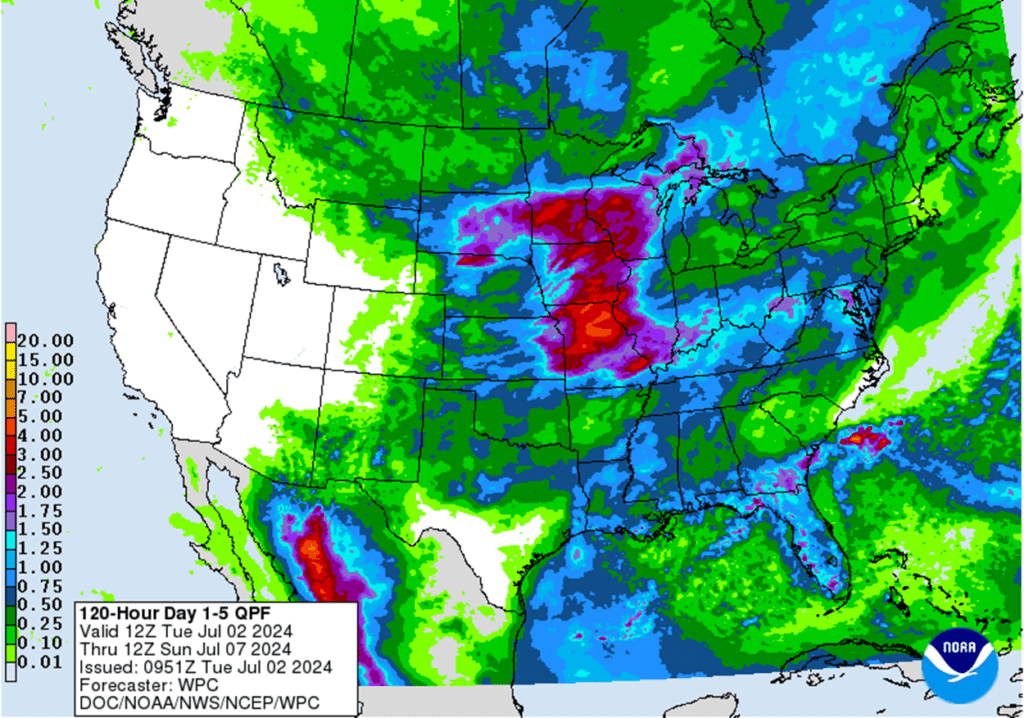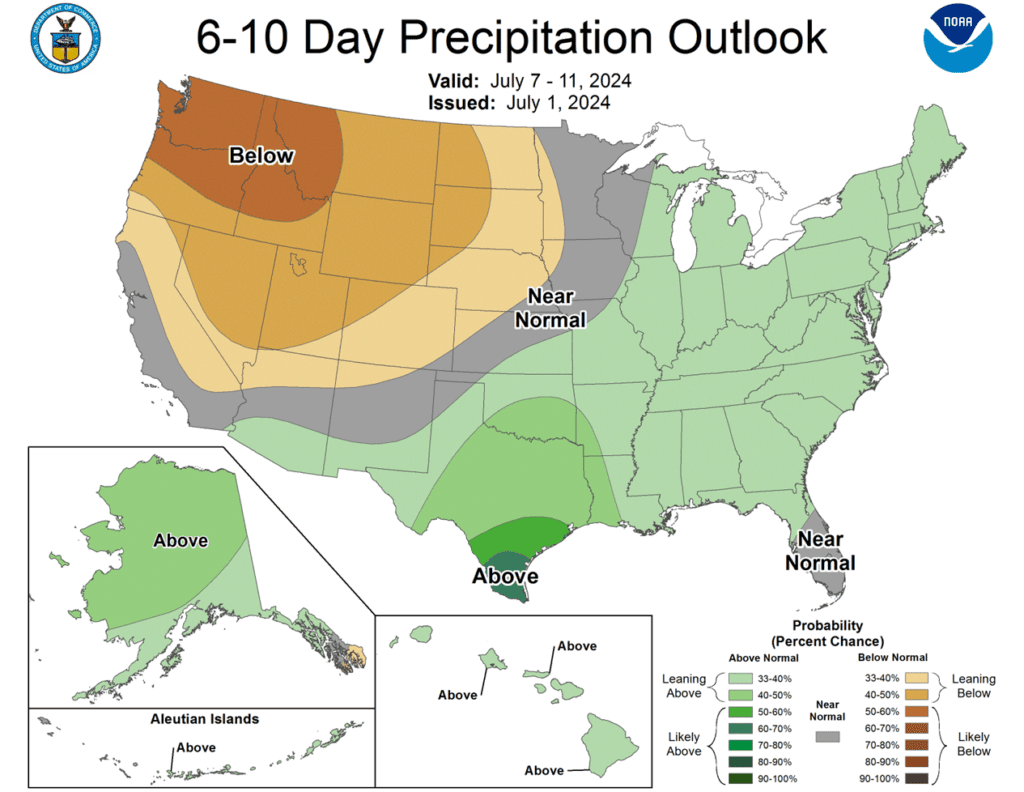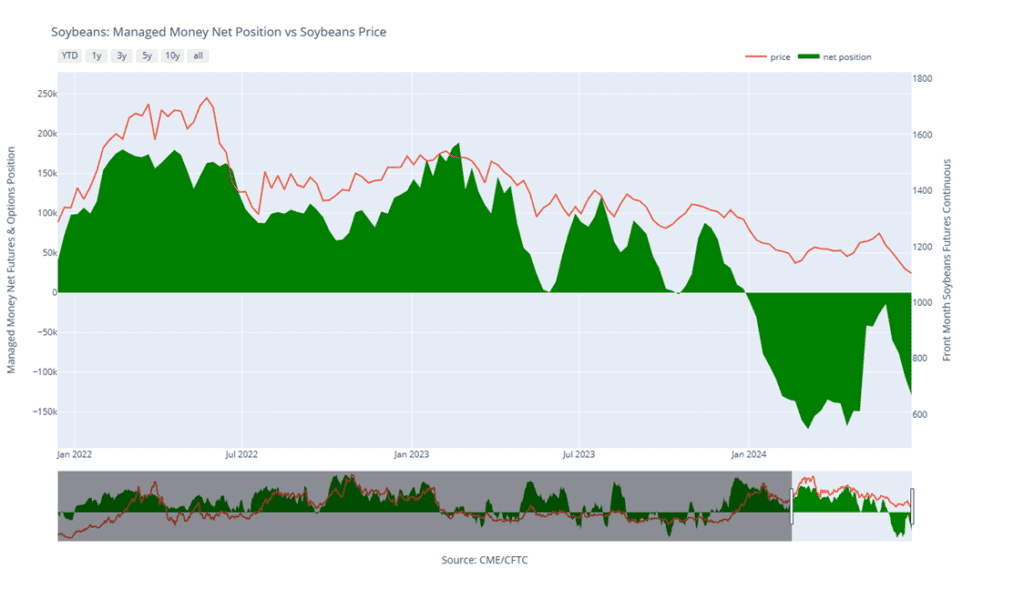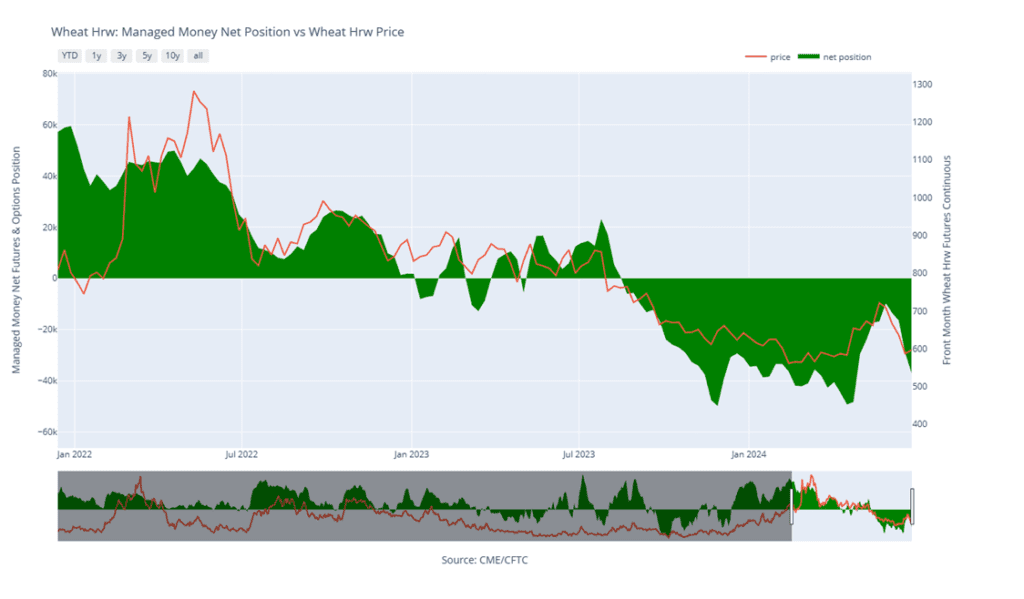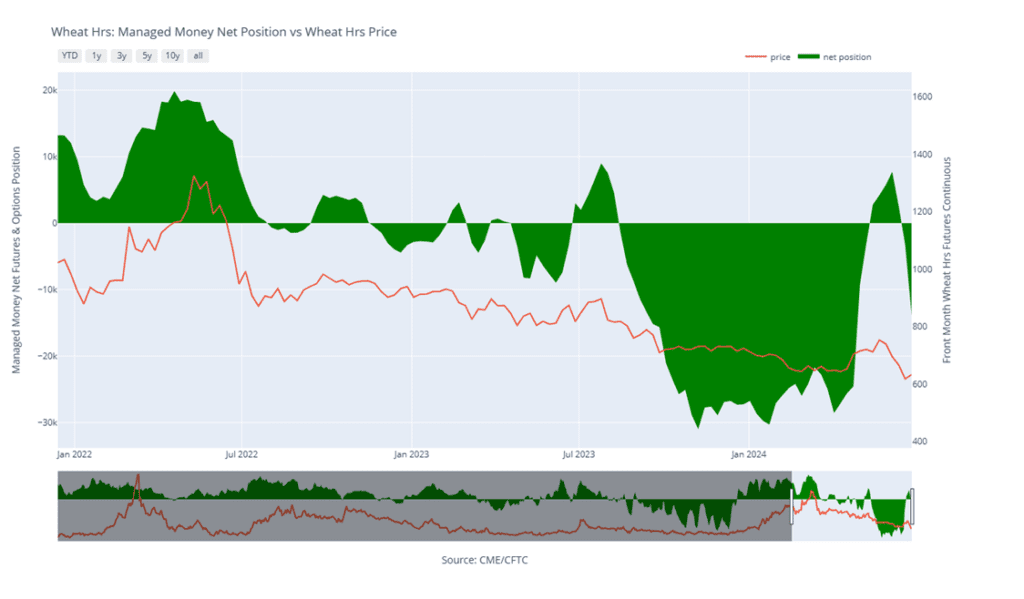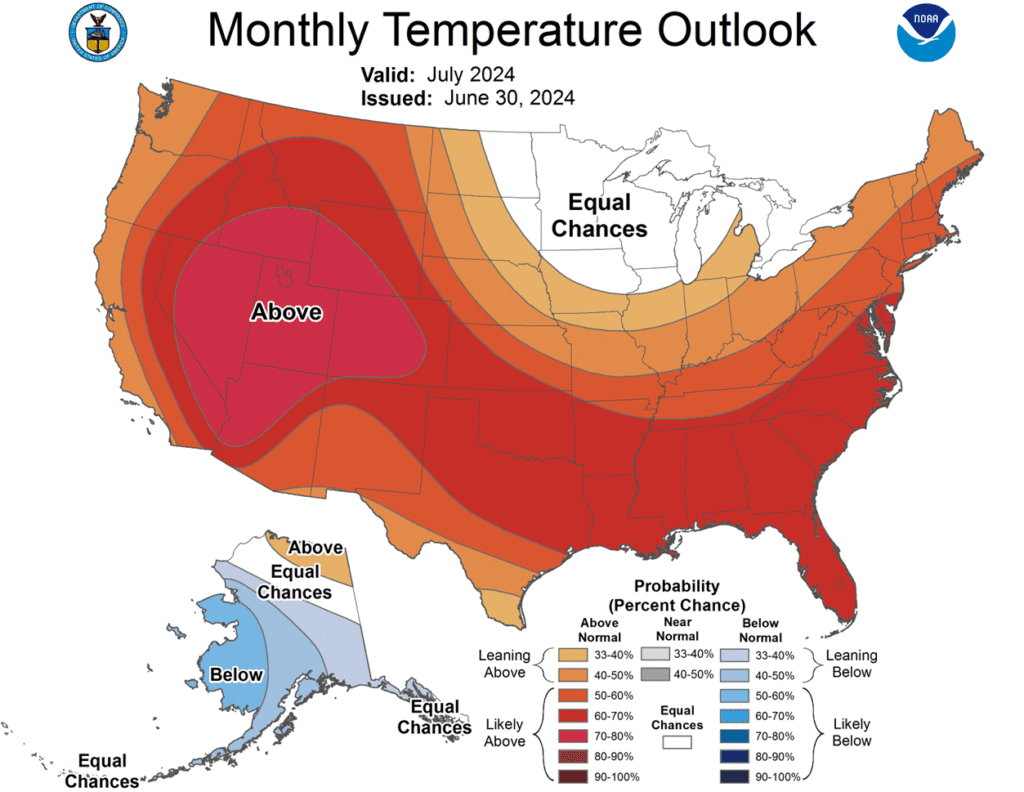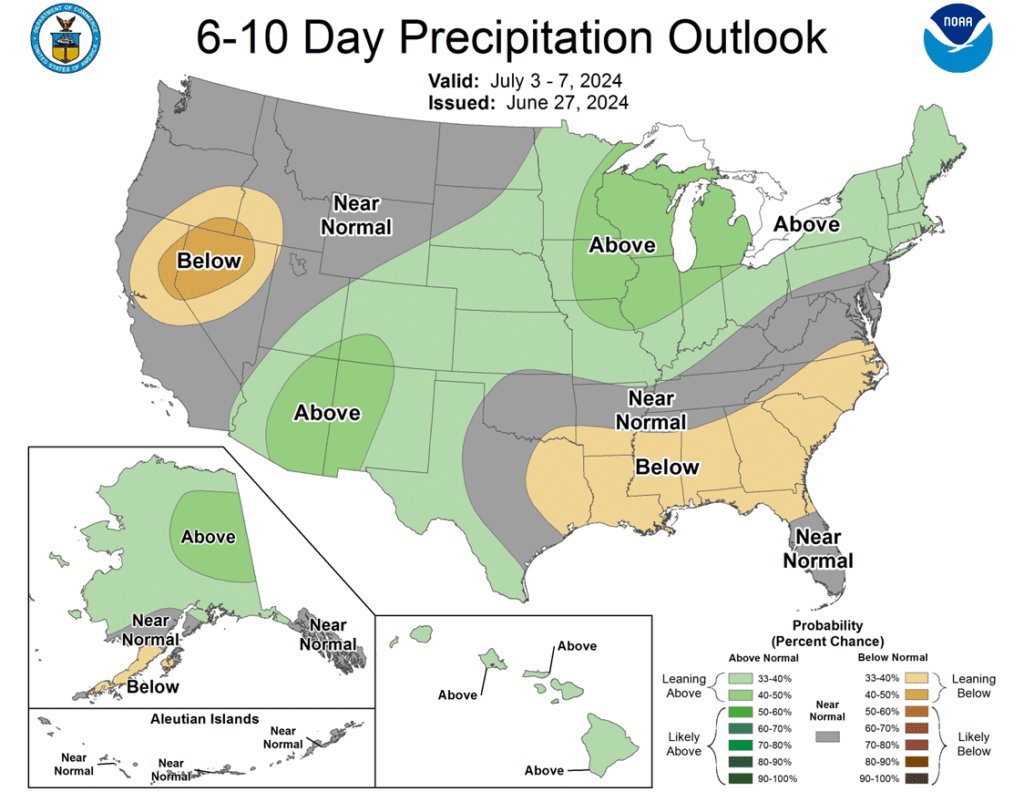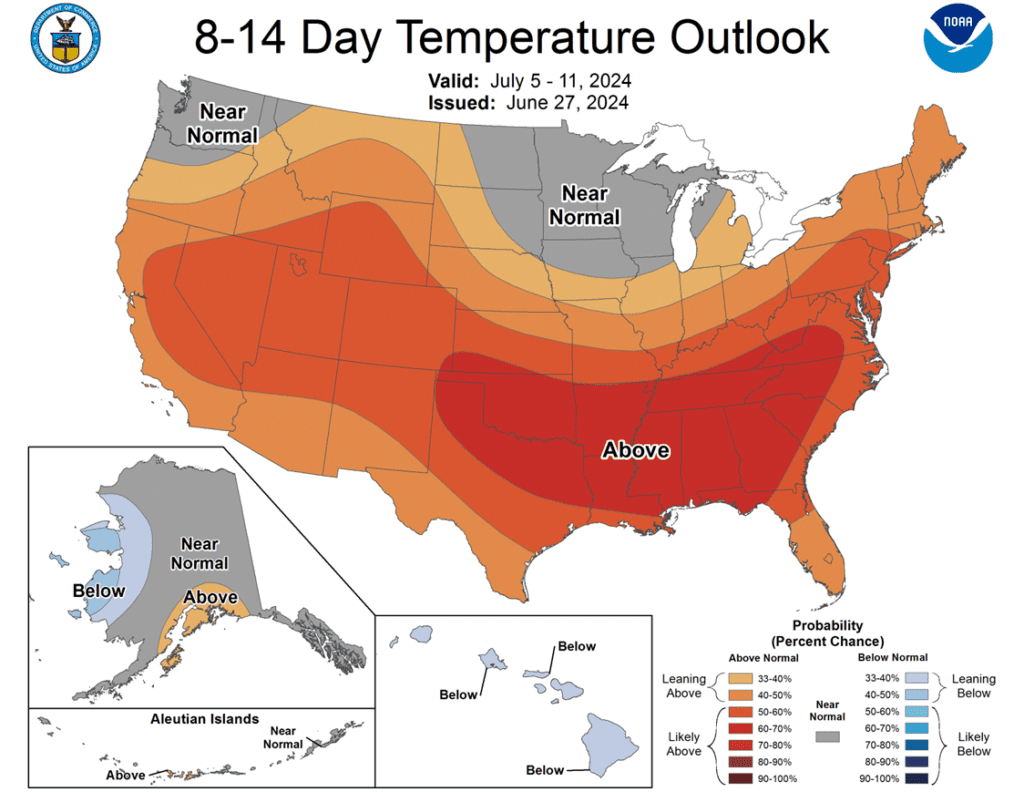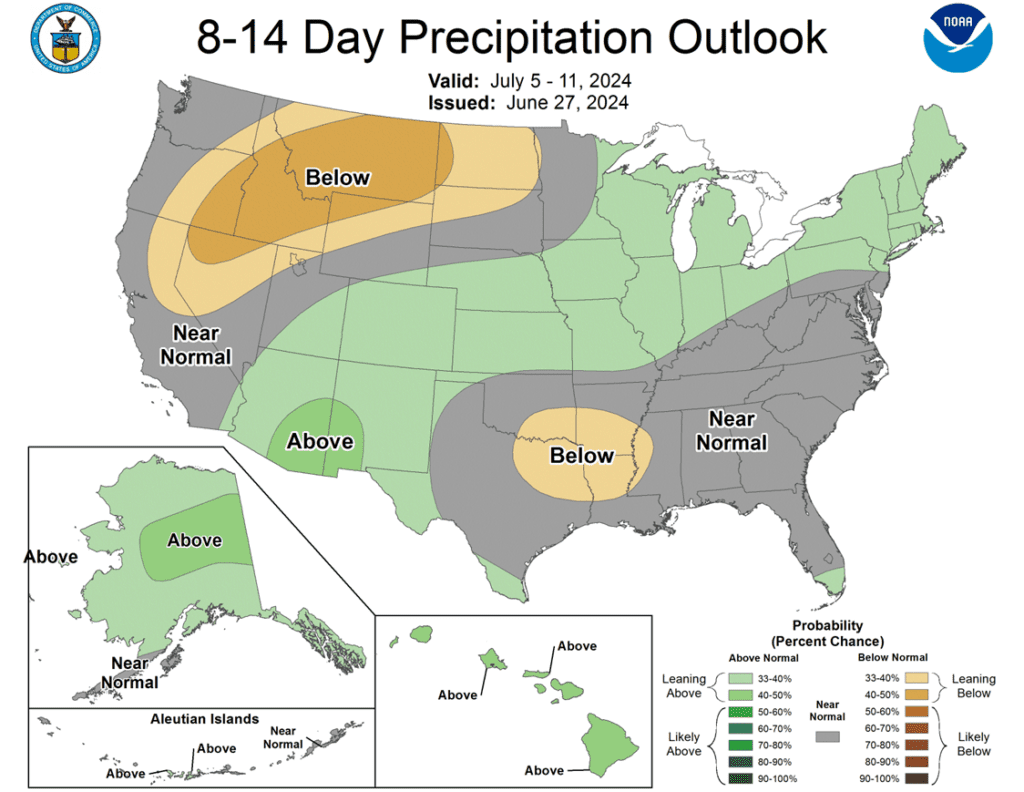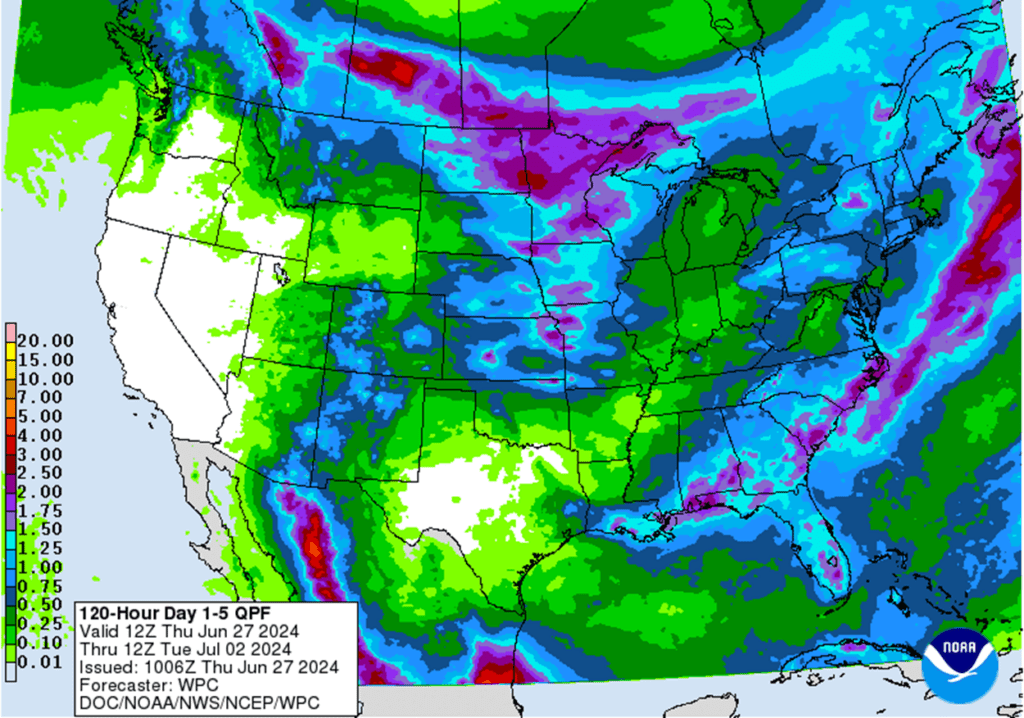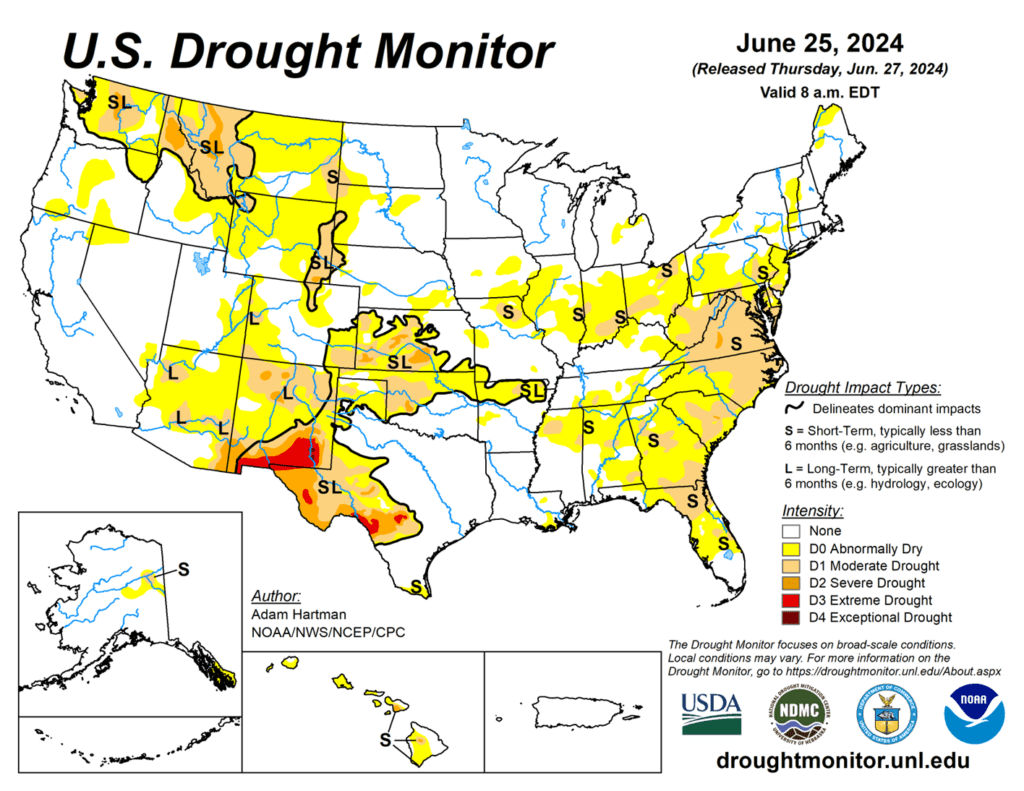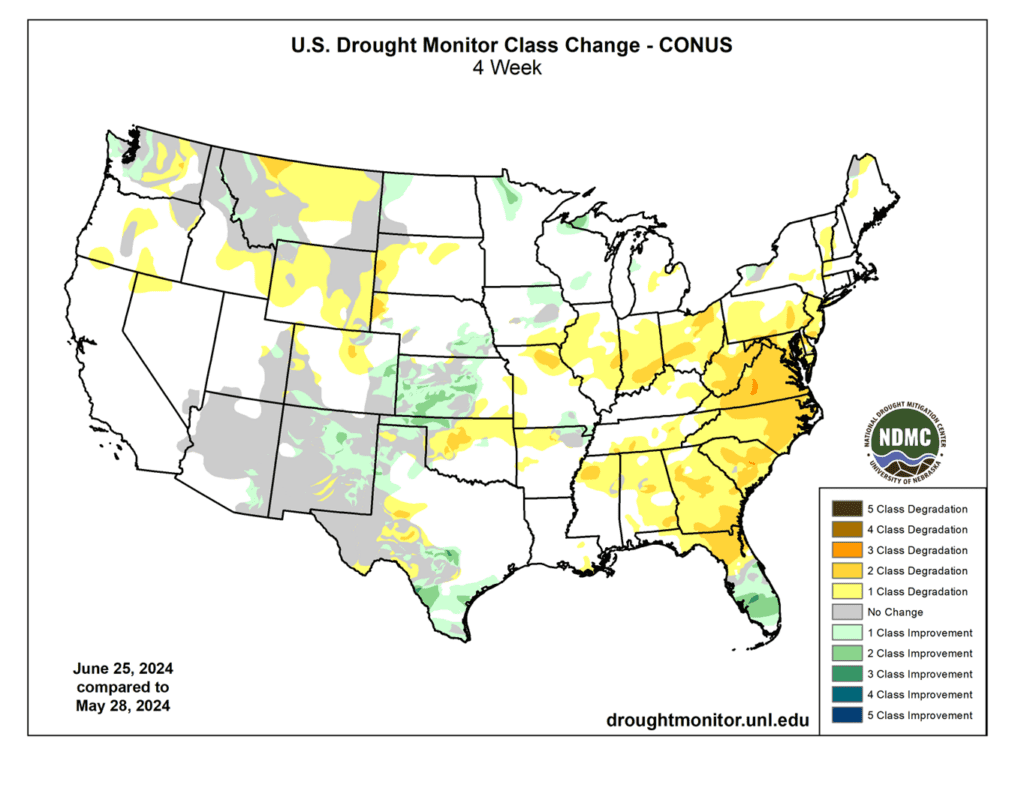7-11 End of Day: Grain Markets Rebound on Short Covering Ahead of Friday’s USDA Report
All prices as of 2:00 pm Central Time
Grain Market Highlights
- The corn market closed on a firm note ahead of tomorrow’s USDA WASDE report. Although the report is expected to show increased supplies for both old and new crops, the market likely found support from traders covering short positions in preparation of its release and from strength in neighboring wheat.
- Soybean prices traded both sides of unchanged during the session as traders squared their positions ahead of tomorrow’s report. Support from sharply higher soybean oil and moderately higher meal helped soybeans settle mostly higher, well above the day’s lows.
- The wheat complex settled higher on the day across all three classes led by the KC contracts. The complex likely saw a measure of short covering that was triggered by reports of Ukraine seizing a ship carrying looted grain, and further fueled by a sharply lower US Dollar on cooler than expected inflation data.
- To see the updated US 5-day precipitation forecast, an US Drought Monitor courtesy of NOAA, the Weather Prediction Center, and NDMC, scroll down to the other Charts/Weather section.
Note – For the best viewing experience, some Grain Market Insider content is best viewed with your phone held horizontally.
Corn
Corn Action Plan Summary
The June Stocks and Acreage reports gave the corn market little in the way of bullish news as both numbers came in above expectations, increasing the possibility of a carryout in excess of 2 billion bushels for the 24/25 crop year. While the market has a bearish tilt, demand has been solid, and the 2024 growing season is still young with lots of potential ahead as weather remains the dominant market mover.
- No new action is recommended for 2023 corn. Any remaining old crop 2023 corn should be getting priced into market strength. Grain Market Insider won’t have any “New Alerts” for 2023 corn – either Cash, Calls, or Puts, as we have moved focus onto 2024 and 2025 Crop Year Opportunities.
- No new action is recommended for 2024 corn. We recently recommended buying Dec ’24 470 and 510 calls after Dec ’24 closed below 451, for their relative value and because we are at that time of year of high volatility when markets can move swiftly. Moving forward, our current strategy is to target the value of 29 cents to exit the Dec ’24 470 calls. Exiting the 470 calls at 29 cents will allow you to lock in gains in case prices fall back and hold the remaining 510 calls at or near a net neutral cost, which should continue to protect existing sales and give you confidence to make further sales if the market rallies sharply. To take further action, we are targeting the 490 – 510 area to recommend making additional sales versus Dec ’24.
- Grain Market Insider sees a continued opportunity to sell a portion of your 2025 corn crop. With it being the time of year to start getting early sales on the books for next year, and considering that the higher-than-expected June 1 stocks suggest an increasing supply outlook for the 2024 crop, which could create overhead resistance for 2025 prices, we suggest making a sale for the 2025 corn crop using either Dec ’25 futures or a Dec ’25 HTA contract, allowing the basis to be set at a more advantageous time later on.
To date, Grain Market Insider has issued the following corn recommendations:

- The corn market was firmer on the session, supported by strength in the wheat market and short covering ahead of Friday’s USDA WASDE/Crop production report. The December contract is trading down 13 ¼ cents on the week going into the Friday session. The July futures contract expires on Friday.
- Expectations for the USDA Crop Production report on Friday is looking for increased corn carry out for the current and next marketing year as the USDA will be adding in the numbers from the Acreage and Grain Stocks reports on June 28. Expectations are for corn carryout for the 24/25 marketing year to reach 2.272 billion bushels, up 170 mb from last month. Typically, the USDA will not adjust yield or acreage in the July report.
- The weekly export sales report was within expectations for corn. Last week, US exporters posted new sales of 21.2 mb (538,000 mt) of old crop and 4.6 mb (117,000 mt) of new crop corn. Total new crop sales remain disappointing and have limited market strength.
- The Brazil Ag Agency, CONAB, released their July crop projections for corn and soybeans this morning. CONAB increased Brazil’s corn crop forecast to 115.86 mmt, up 1.7 mmt from their June projections, as yields were better than expected in some areas for the second crop harvest. Total corn production is still 12% smaller than last year, which totaled 131.89 mmt.

Above: Since mid-June the corn market has been stuck in a downtrend, and the market’s pierce of 393 support suggests that it may slide further, possibly towards the next support area between 362 and 360, if 393 doesn’t hold. If this area of support holds and prices rally back, they could encounter overhead resistance around 410 – 415.
Soybeans
Soybeans Action Plan Summary
Weighed down by sluggish export demand and non-threatening weather, the soybean market was on a choppy downward trajectory leading up to the June stocks and acreage reports. Although June 1 stocks came in above expectations, acreage came in below, leaving less margin for error if growing conditions turn hot and dry later on. With much of the growing season ahead of us, a weather-related issue or surge in demand appears to be the most likely catalysts to push prices back near their recent highs.
- No new action is recommended for 2023 soybeans. As we progress into the 2024 growing season, time is becoming limited to market the remaining 2023 old crop inventory. Although we are currently targeting a rebound to the 1275 – 1325 area versus Aug ’24 futures as our Plan A strategy, for what will likely be our final sales recommendation for the 2023 crop, we also don’t want to carry old crop inventory past mid-July due to seasonal weakness. Taking this into consideration, if the market does not present the opportunity to make sales at our Plan A target, our Plan B strategy will be to issue our final sales recommendation sometime in mid-July.
- No new action is recommended for the 2024 crop. At the end of December, we recommended buying Nov ’24 1280 and 1360 calls due to the amount of uncertainty in the 2024 soybean crop and to give you confidence to make sales and protect those sales in an extended rally. Given that the market has retreated since that time, we are targeting the upper 1100s versus Nov ’24 futures to exit 1/3 of the 1280 calls to help preserve equity. Most recently we employed our Plan B strategy with the close below 1180 in Nov ’24 and recommended making additional sales due to the potential change in trend. With much of the growing season still ahead of us, should the market turn back higher, we are targeting the 1240 – 1280 range from our Plan A strategy to potentially make two additional sales recommendations.
- No Action is currently recommended for 2025 Soybeans. We currently aren’t considering any recommendations at this time for the 2025 crop that will be planted next year, and it may be some time before conditions are conducive to consider making any recommendations. Be patient as we monitor the markets for signs of improvement.
To date, Grain Market Insider has issued the following soybean recommendations:
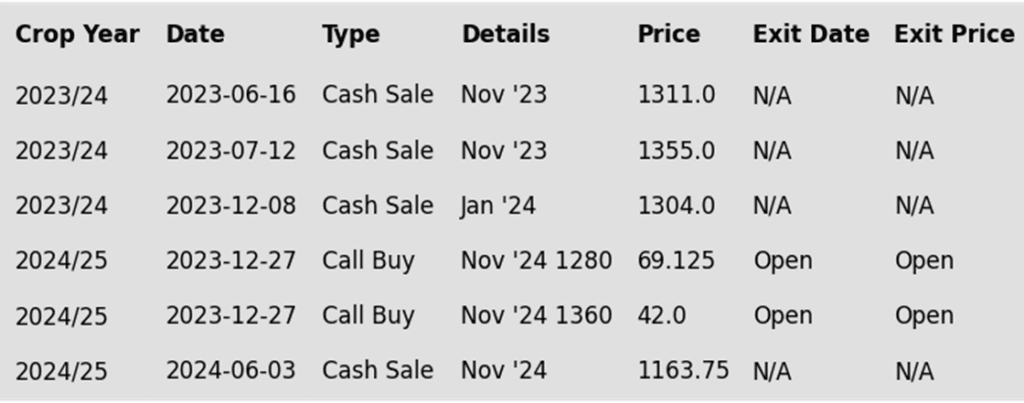
- Soybeans ended the day slightly mixed, with front month August higher, the September contract unchanged, and the deferred contracts higher, after prices fell from their highs earlier this morning following a disappointing export sales report. Funds were likely exiting some short positions ahead of tomorrow’s WASDE report as well. Both soybean meal and oil ended the day higher.
- Today’s export sales report showed an increase in soybean export sales of 7.6 mb for 23/24 and an increase of 7.0 mb for 24/25. This was down 9% from the previous week and 40% from the prior 4-week average. Last week’s export shipments of 9.8 mb were below the 14.3 mb needed each week, and primary destinations were to the Netherlands, Indonesia, and Japan.
- Tomorrow, the USDA will release its WASDE report and expectations are for old crop ending stocks to increase slightly while new crop is expected to fall a bit due to lower acreage. Brazil’s soybean production is expected to be lowered as well.
- This morning, CONAB released its July estimates for Brazil’s soybean production but made few changes. Production was called at 147.34 mmt compared to 147.35 mmt last month. This compares to 154.61 mmt last year and is still well below the USDA’s last estimate.

Above: The recent break through 1125 support suggests that the market could retreat further towards the next major support area between 1050 and 1040, though psychological support may be uncovered around 1100. If prices recover to the upside, they may encounter initial overhead resistance near 1130 with further resistance up towards 1160 – 1165.
Wheat
Market Notes: Wheat
- Wheat closed sharply higher with Kansas City futures leading the charge. Talk that Ukraine seized a Russian cargo vessel containing stolen wheat put some war premium back into the marketplace. Additionally, CONAB lowered their estimate of Brazil’s wheat production from 9.065 mmt last month, to 8.956 mmt this month. Finally, the US Dollar Index was sharply lower today, and at one point hit the lowest level in about a month before gaining some ground back.
- Tomorrow will feature the USDA’s monthly Supply and Demand report. The average pre-report estimate for US all wheat production is 1.913 bb, which would be up from 1.875 bb in June. Additionally, US ending stocks are expected to increase. For 23/24 the average guess is 698 mb versus 688 mb in June, and for 24/25 the trade guess is pegged at 793 mb versus 758 mb last month. Finally, world wheat carryout is expected to increase slightly for both crop seasons as well.
- The USDA reported an increase of 8.8 mb of wheat export sales for 24/25. Shipments last week at 10.8 mb fell below the 15.5 mb pace needed per week to reach their export goal of 800 mb. However, US wheat sales commitments are up 42% from this time last year at 262 mb.
- Canadian wheat production is estimated at 33.3 mmt, which is a decline of 1% from the previous estimate. Lower potential yields in the province of Saskatchewan due to dryness is cited as the reason for the drop. Yield projections are unchanged for both Alberta and Manitoba.
- According to their agriculture ministry, Ukraine has exported 1.13 mmt of grain since the season began on July 1. This represents an increase of 62% over last year’s 689,000 mt exported during the same timeframe. Of that total, 320,000 mt was said to be wheat, which is a 51% increase year over year. The surge in exports could be explained by delays and slow inspections last year before Russia withdrew from the Black Sea Grain Initiative.
Chicago Wheat Action Plan Summary
Since rallying nearly 200 cents from the March low to the May high, largely on fund short covering from Russian crop concerns and dryness in the southwestern Plains, prices have fallen from their peak with seasonal weakness and a quick harvest pace. Although prices remain weak, the market shows signs of being oversold, which can be supportive in the event prices turn back higher, while the breakout above the December highs suggests there is potential for a test of the 2023 summer highs post-harvest.
- No new action is recommended for 2024 Chicago wheat. Considering the recent rally in wheat, we recommended taking advantage of the elevated prices to make additional sales and buy upside July ’25 860 and 1020 calls (for their extended time frame) in case of a protracted rally. Our current strategy is to target 740 – 760 versus Sept ’24 to recommend further sales and to target a selling price of about 73 cents in the 860 calls to achieve a net neutral cost on the remaining 1020 calls. The remaining 1020 calls would then continue to protect existing sales and give you confidence to make additional sales at higher prices.
- No new action is currently recommended for 2025 Chicago Wheat. Given the weakness in the wheat market we recently employed our Plan B strategy and recommended making an additional sale as prices broke through 667 support. Moving forward, we continue to target the value of 68 cents in the July ’25 620 puts (double the original approximate cost) to exit half of the original previously recommended position, leaving the balance to continue to provide downside coverage with a net neutral cost. To take further action, our strategy is to target the 750 – 780 range to recommend making additional sales.
- No action is currently recommended for 2026 Chicago Wheat. We currently aren’t considering any recommendations at this time for the 2026 crop that will be planted next year, and it may be some time before conditions are conducive to consider making any recommendations. Be patient as we monitor the markets for signs of improvement.
To date, Grain Market Insider has issued the following Chicago wheat recommendations:


Above: Since late June Chicago wheat has been largely rangebound between 591 up top and 556 down below. Should support hold and prices breakout and close above 600 psychological resistance, they could move toward the 630 – 645 area, while a close below 556 could find further support between 550 and 520.
KC Wheat Action Plan Summary
Since the end of May the wheat market has been trending lower as concerns regarding Russia’s shrinking wheat crop have waned, and US HRW harvest yields have been higher than expected. During this time managed funds started reestablishing their short positions while the market continues to show signs of being oversold. While harvest pressure and falling Black Sea export prices continue to weigh on US prices, the funds’ short position and oversold conditions could culminate in a short covering rally on any increase in demand as world wheat ending stocks are expected to fall yet again this year.
- No new action is recommended for 2024 KC wheat. Considering the recent upside breakout in KC wheat, we recommended buying upside July ’25 860 and 1020 calls (for their extended time frame) in case of a protracted rally. Our current strategy is to target 725 – 750 versus Sept ’24 to recommend further sales and to target a selling price of about 71 cents on the 860 calls to achieve a net neutral cost on the remaining 1020 calls. The remaining 1020 calls would then continue to protect existing sales and give you confidence to make additional sales at higher prices.
- No new action is currently recommended for 2025 KC Wheat. We recently recommended exiting half of the previously recommended July ’25 620 puts once they reached 60 cents (double the original approximate cost) to realize gains in case the market rallies back, while still holding the remaining 620 puts at, or near, a net neutral cost for continued downside coverage on any unsold bushels. Looking ahead, our strategy is to target the 700 – 725 range to recommend making additional sales.
- No action is currently recommended for 2026 KC Wheat. We currently aren’t considering any recommendations at this time for the 2026 crop that will be planted next year, and it may be some time before conditions are conducive to consider making any recommendations. Be patient as we monitor the markets for signs of improvement.
To date, Grain Market Insider has issued the following KC recommendations:


Above: After breaking through the bottom end of its consolidation range, KC wheat may have found support in the 560 – 550 area of last spring’s lows. If this area holds, prices could turn higher and encounter resistance near 600, as they move towards the 534 – 554 resistance area. Otherwise, a break below 550 could find further support in the 530 area.
Mpls Wheat Action Plan Summary
Since the end of May, the wheat market has been trending lower as concerns about Russia’s shrinking wheat crop have eased and US HRW harvest yields have exceeded expectations. During this period, the market has become extremely oversold, leading managed funds to reestablish their short positions in Minneapolis wheat. Although declining Black Sea export prices and slow world demand continue to depress US prices, the funds’ short positions and oversold conditions could trigger a short-covering rally with any increase in demand, especially as global wheat ending stocks are projected to decline again this year.
- No new action is recommended for 2023 Minneapolis wheat. Any remaining 2023 spring wheat should be getting priced into market strength. Grain Market Insider won’t have any “New Alerts” for 2023 Minneapolis wheat – either Cash, Calls, or Puts, as we have moved focus onto 2024 and 2025 Crop Year Opportunities.
- No new action is recommended for 2024 Minneapolis wheat. With the recent close below the 712 support level, Grain Market Insider implemented its Plan B stop strategy, recommending additional sales for the 2024 crop due to waning upside momentum and an increased likelihood of a downward trend. Given the heightened volatility and the amount of time that remains to market this crop, we will maintain the current July ’25 KC wheat 860 and 1020 call options. Our target is a selling price of about 71 cents for the 860 calls to achieve a net neutral cost on the remaining 1020 calls. These 1020 calls will continue to protect existing sales and provide confidence to make additional sales at higher prices.
- No new action is currently recommended for the 2025 Minneapolis wheat crop. We recently recommended exiting half of the previously recommended July ’25 KC 620 puts once they reached 60 cents (double their original approximate cost), to lock in gains in case the market rallies back, while still holding the remaining 620 puts at, or near, a net neutral cost for continued downside coverage on any unsold bushels. To take further action, our Plan A strategy is to recommend making additional sales in the 700 – 710 range. In case the market comes up short of this upside target range, our current Plan B is a downside stop at 644. As long as the Sept ’25 contract remains above 644 support, the trend appears bullish and we will continue to target 690 – 710. If the Sept ’25 contract were to close below 644, it could be a sign that the trend is changing and that 690 – 710 may no longer be an upside opportunity. Therefore, a break of support would trigger a sale immediately.
To date, Grain Market Insider has issued the following Minneapolis wheat recommendations:
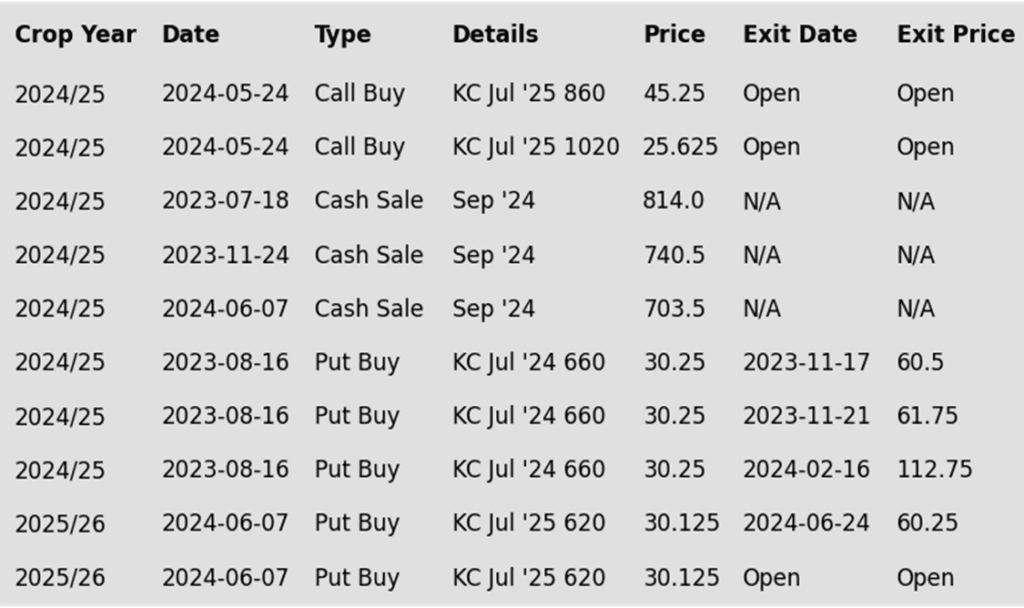

Above: It appears that the rally off the 600 support area encountered resistance just below 640. Should prices continue lower, support remains between 600 and 596, with heavier support towards 542. While a close above 640 could suggest a rally back towards the 662 – 683 resistance area.
Other Charts / Weather

Above: US 5-day precipitation forecast courtesy of NOAA, Weather Prediction Center.

